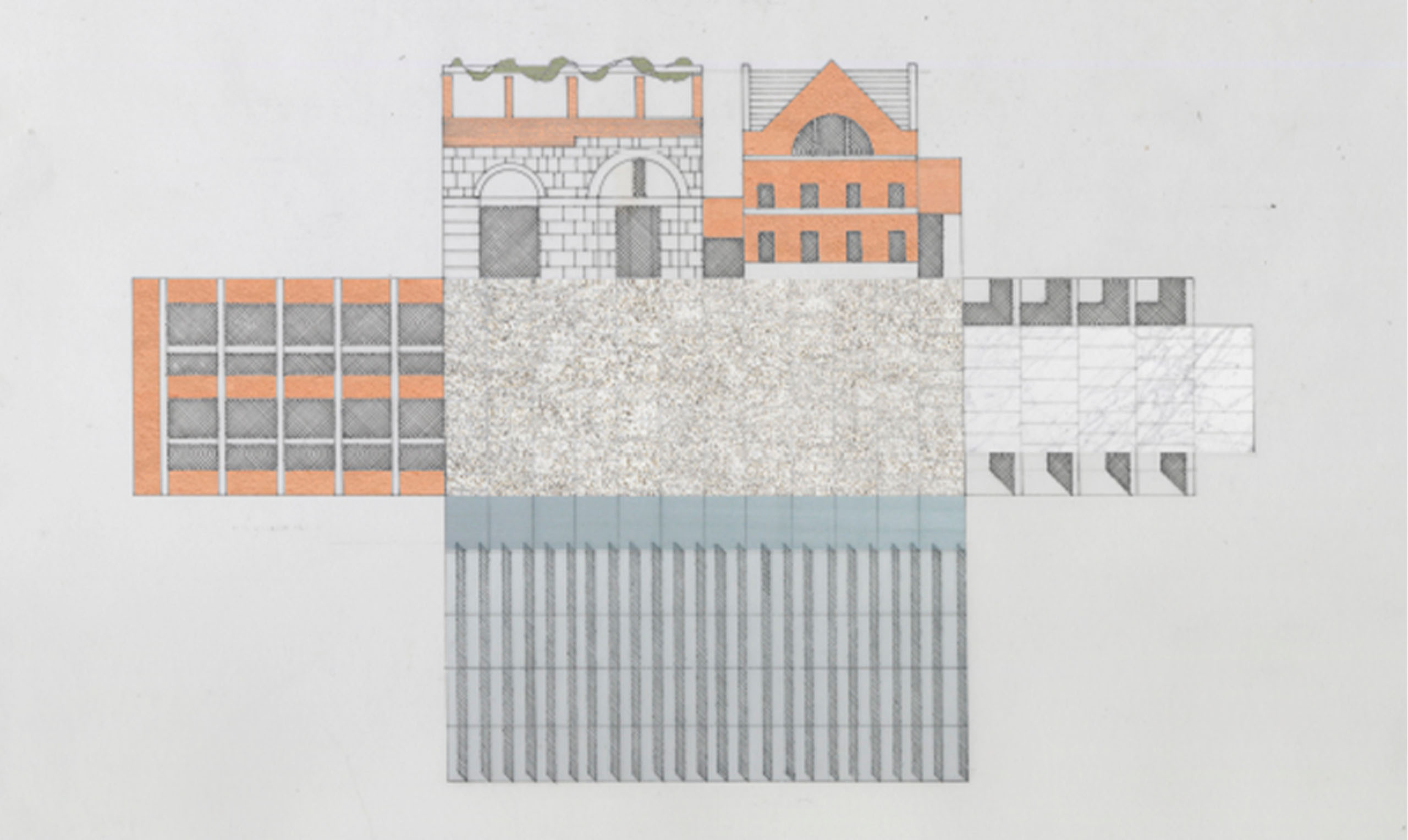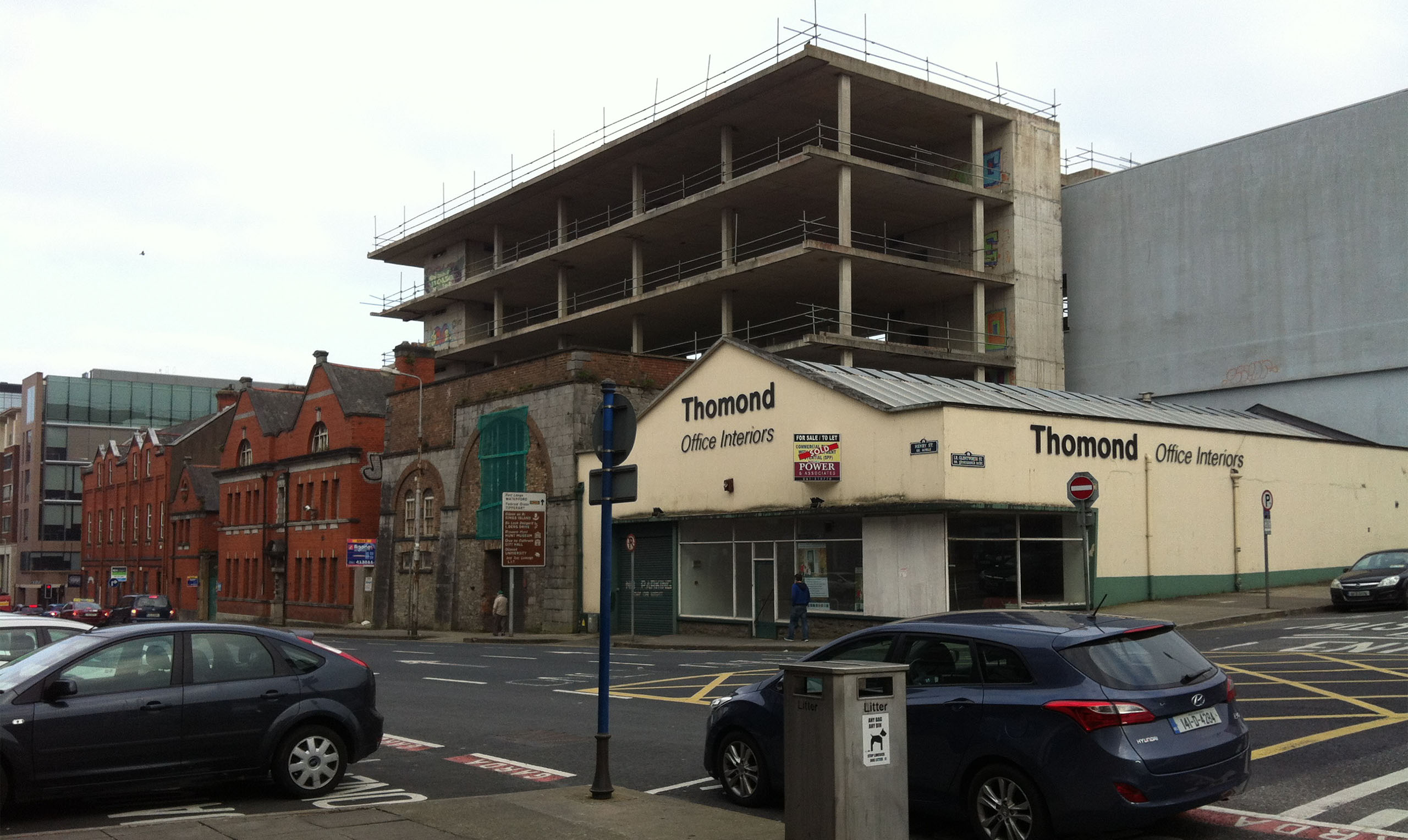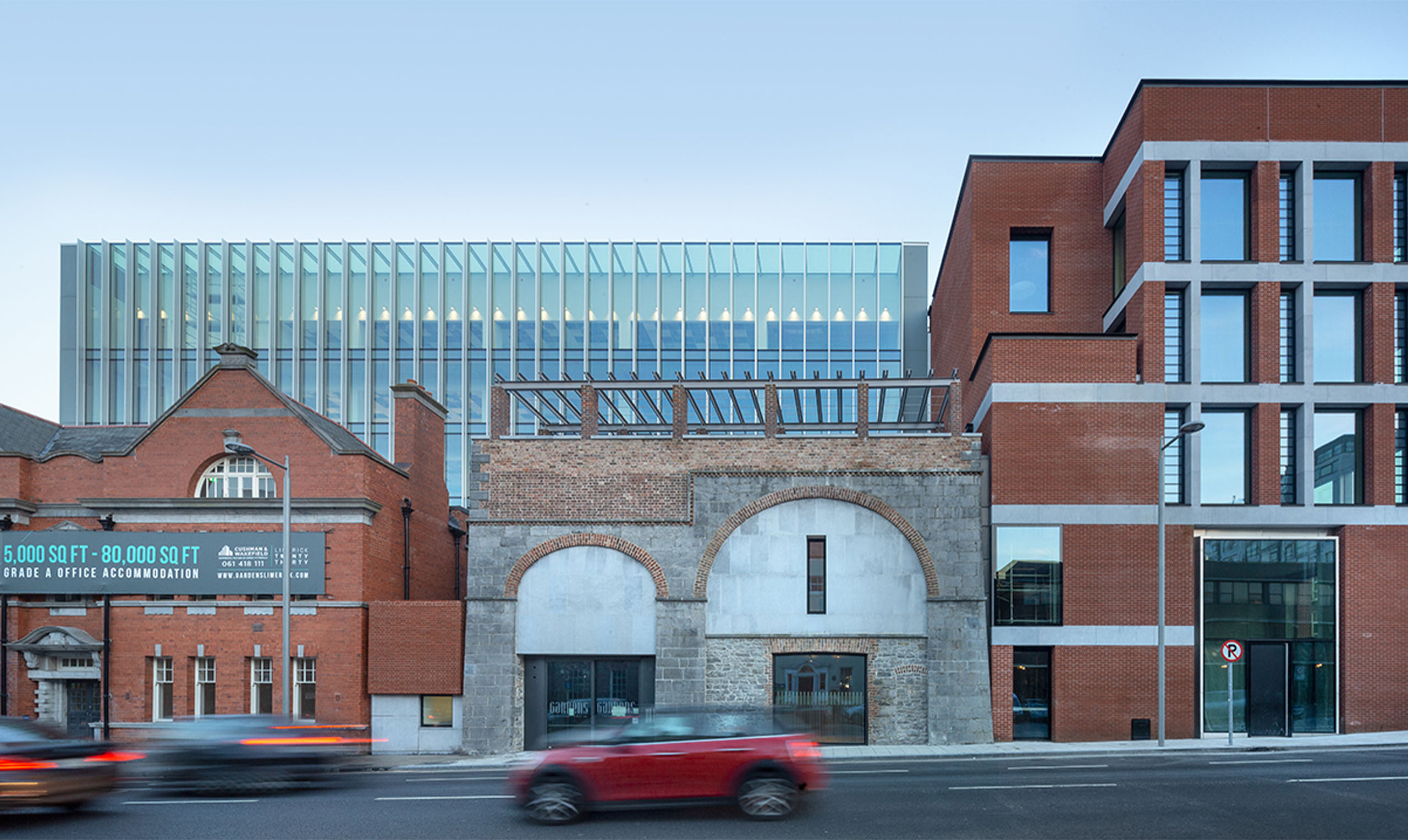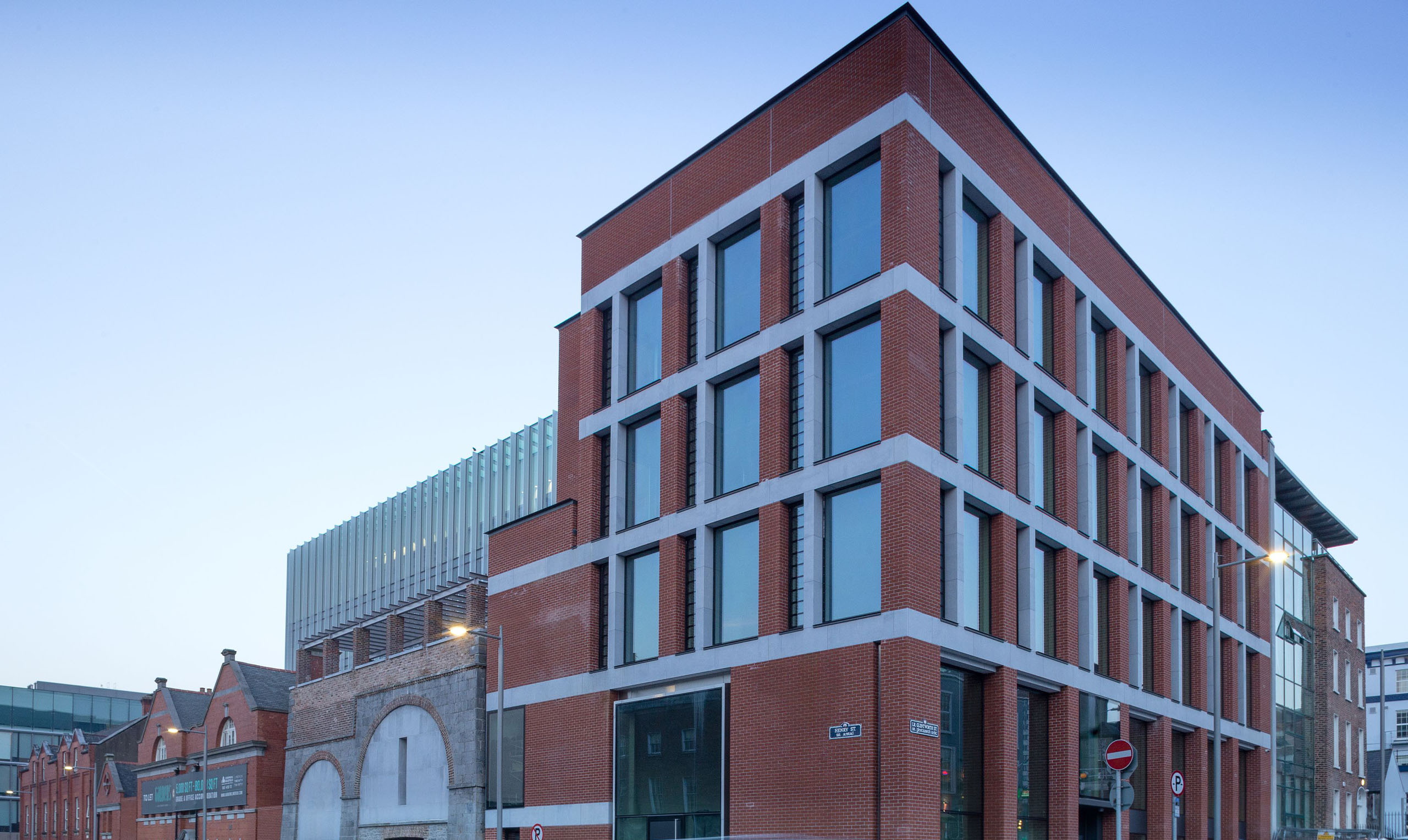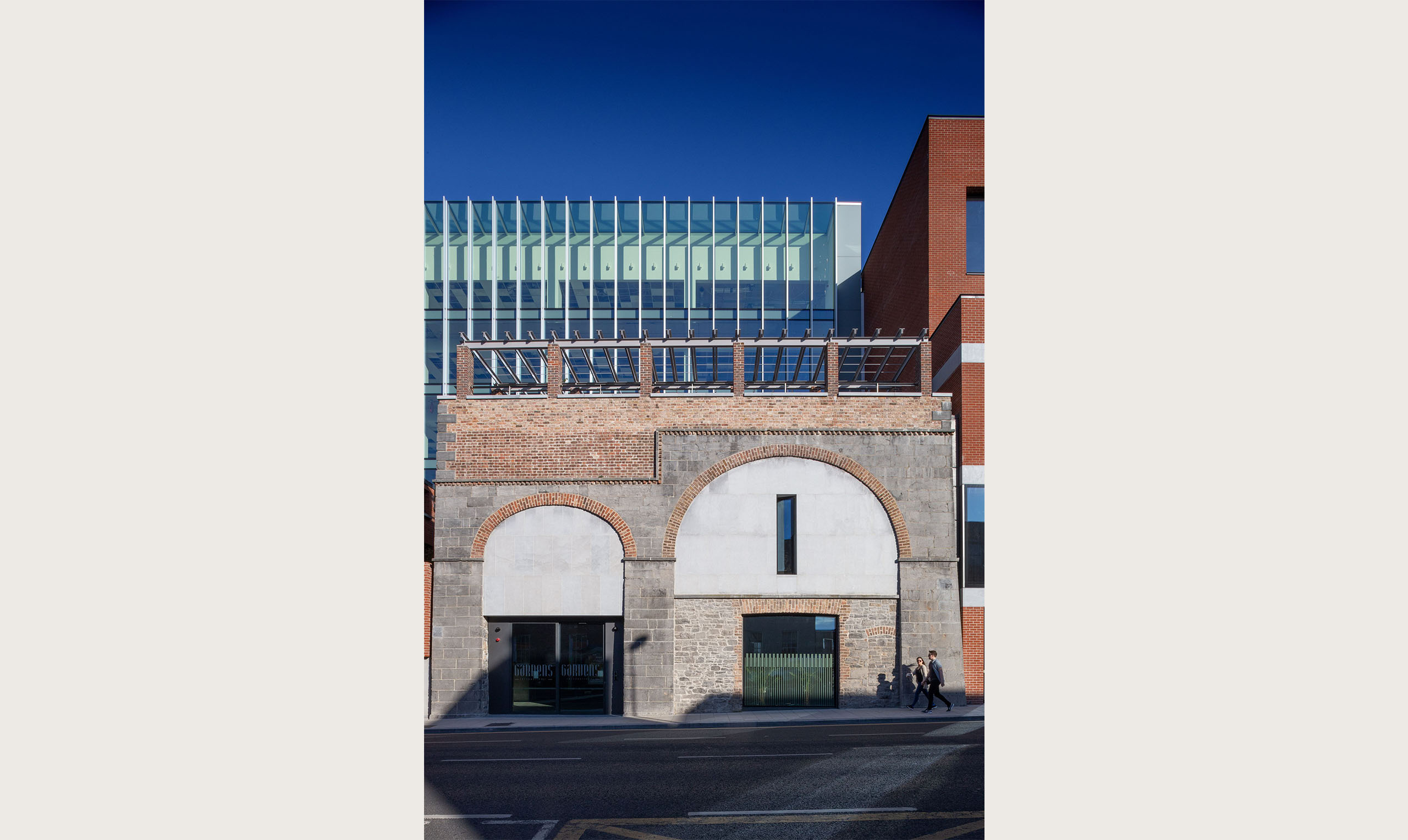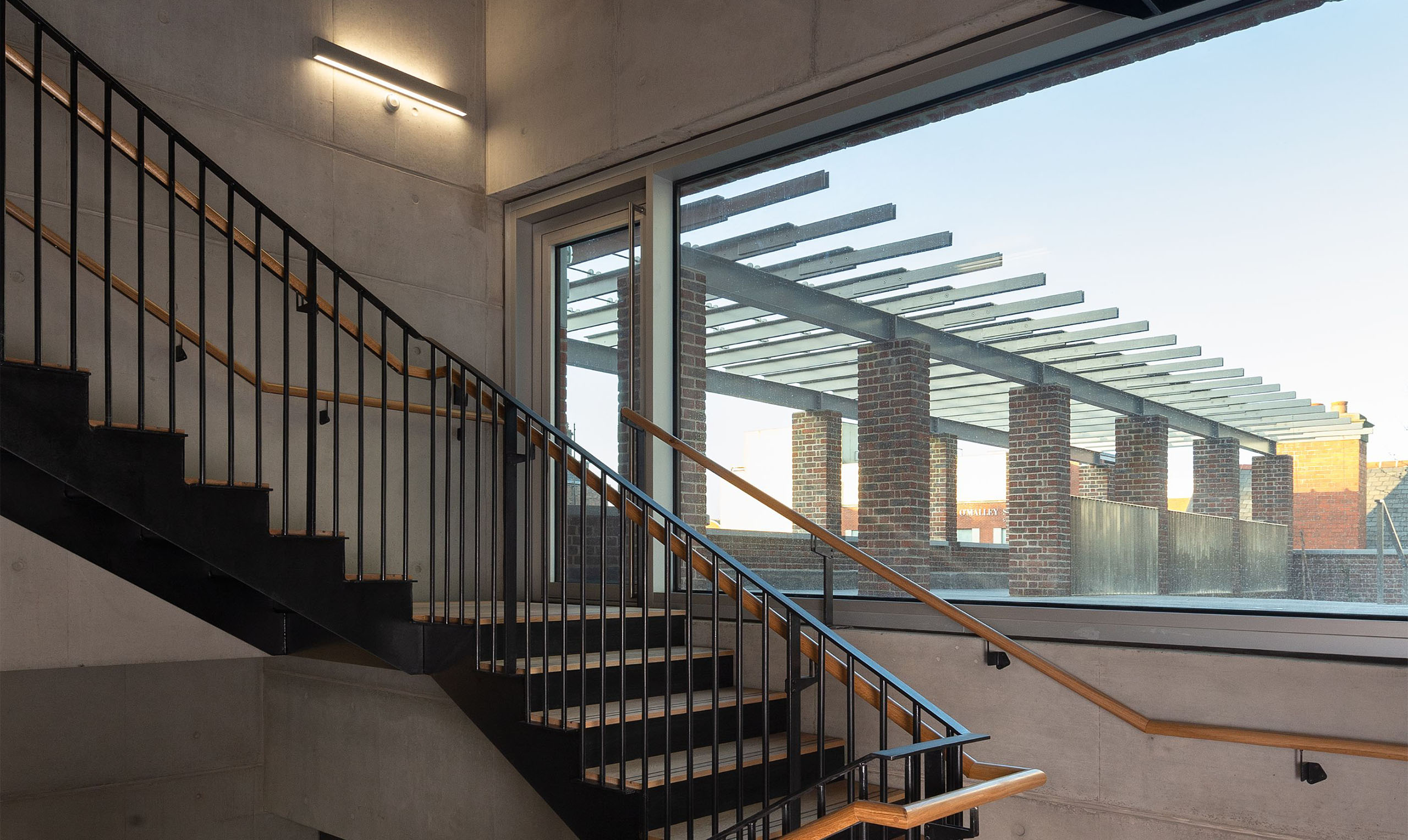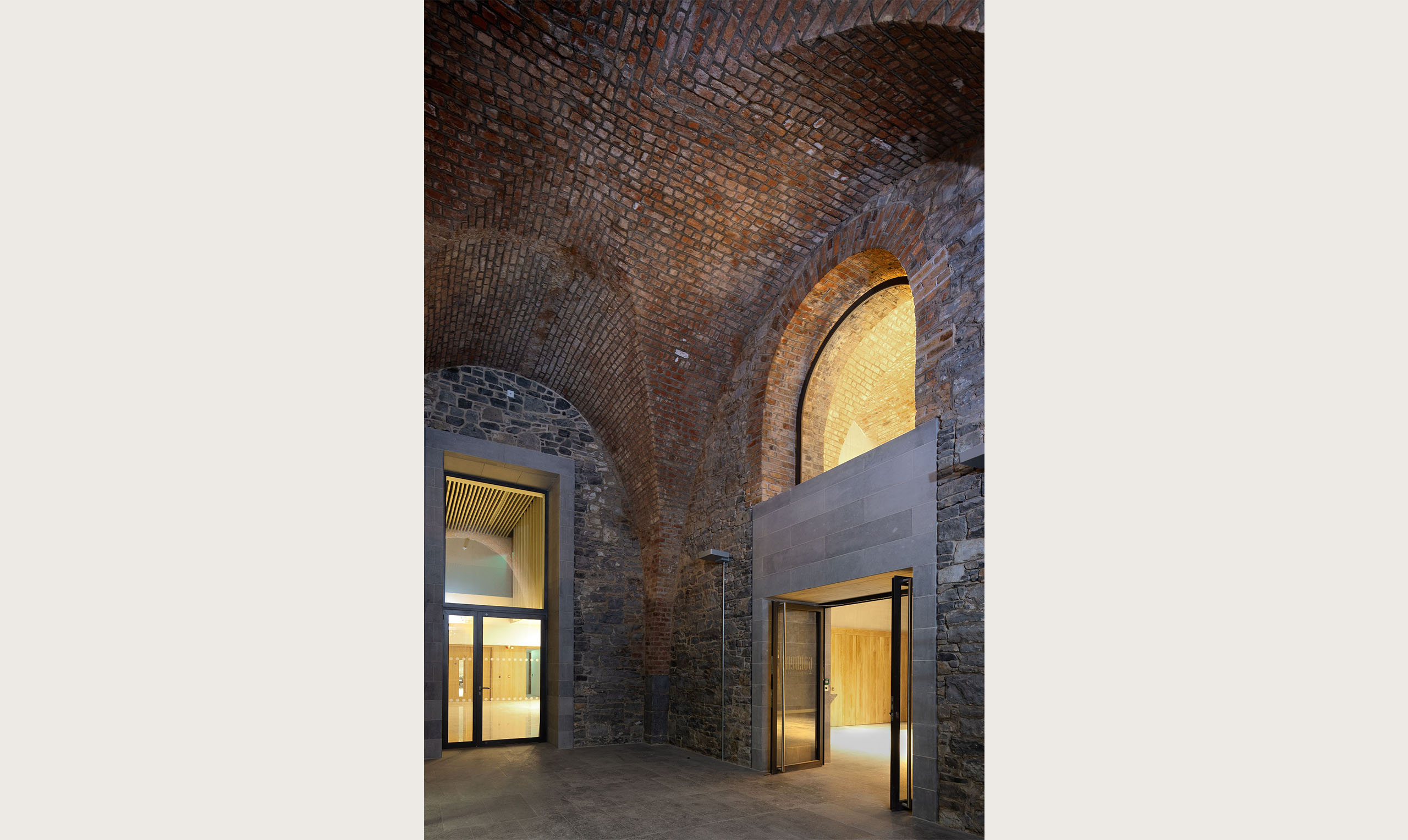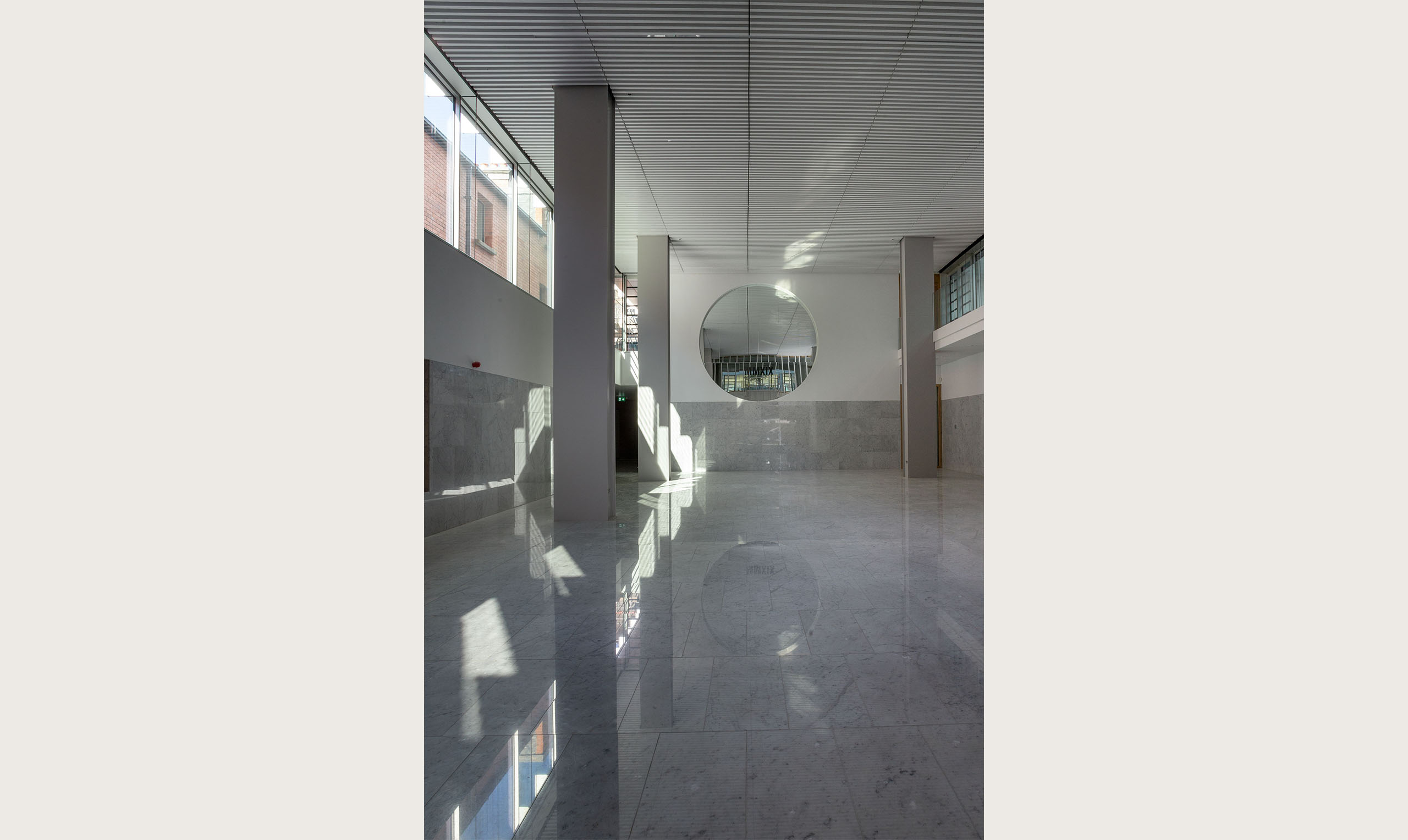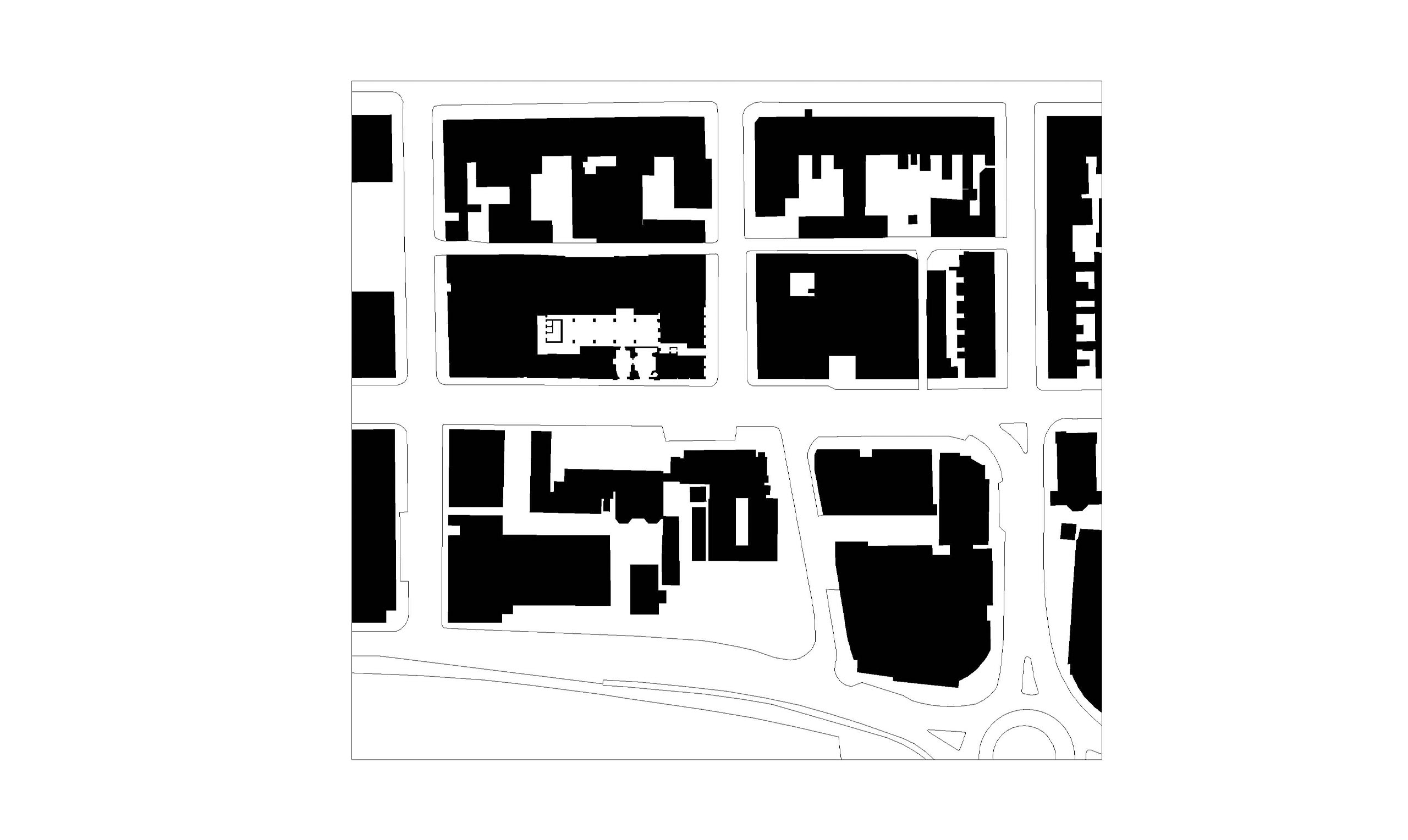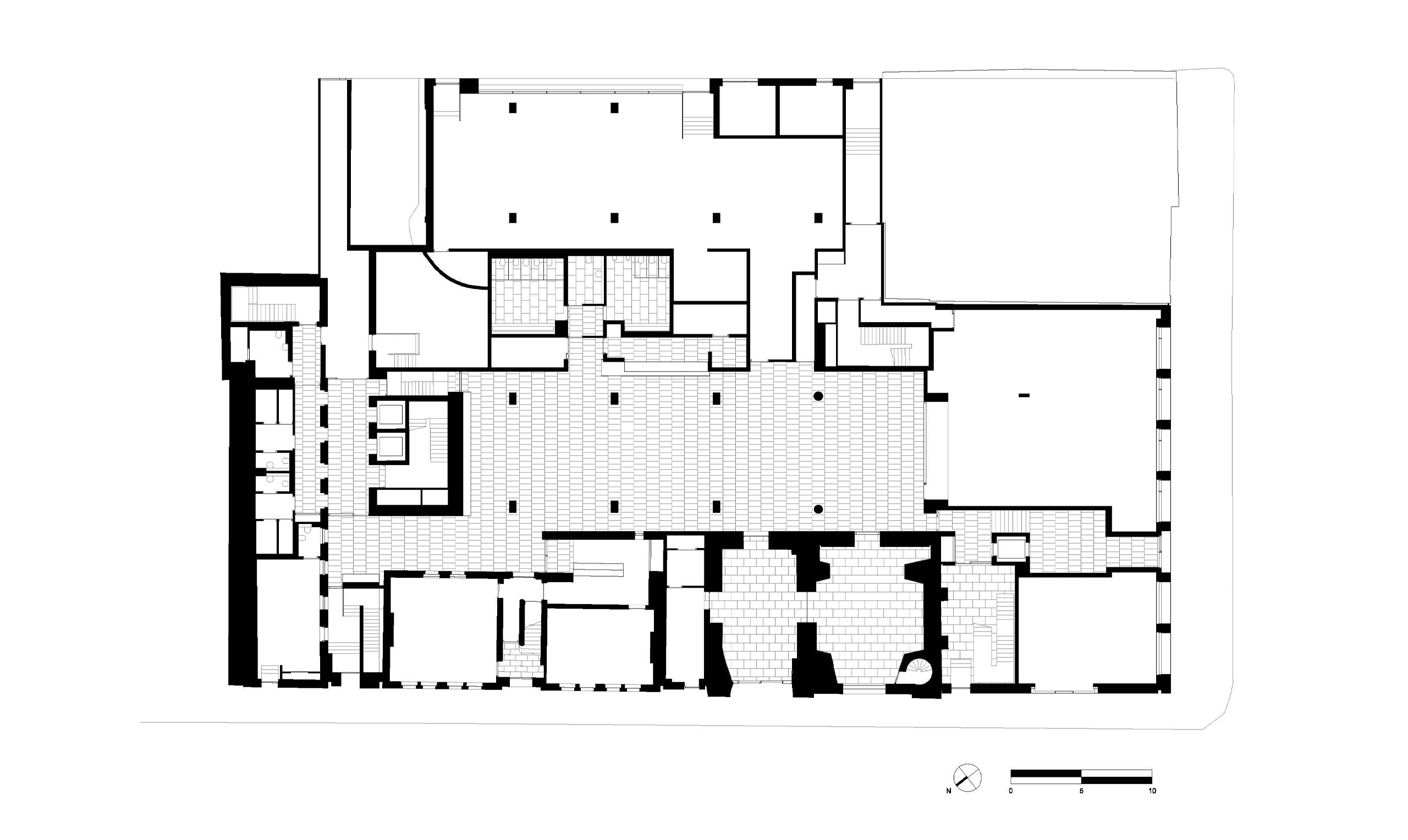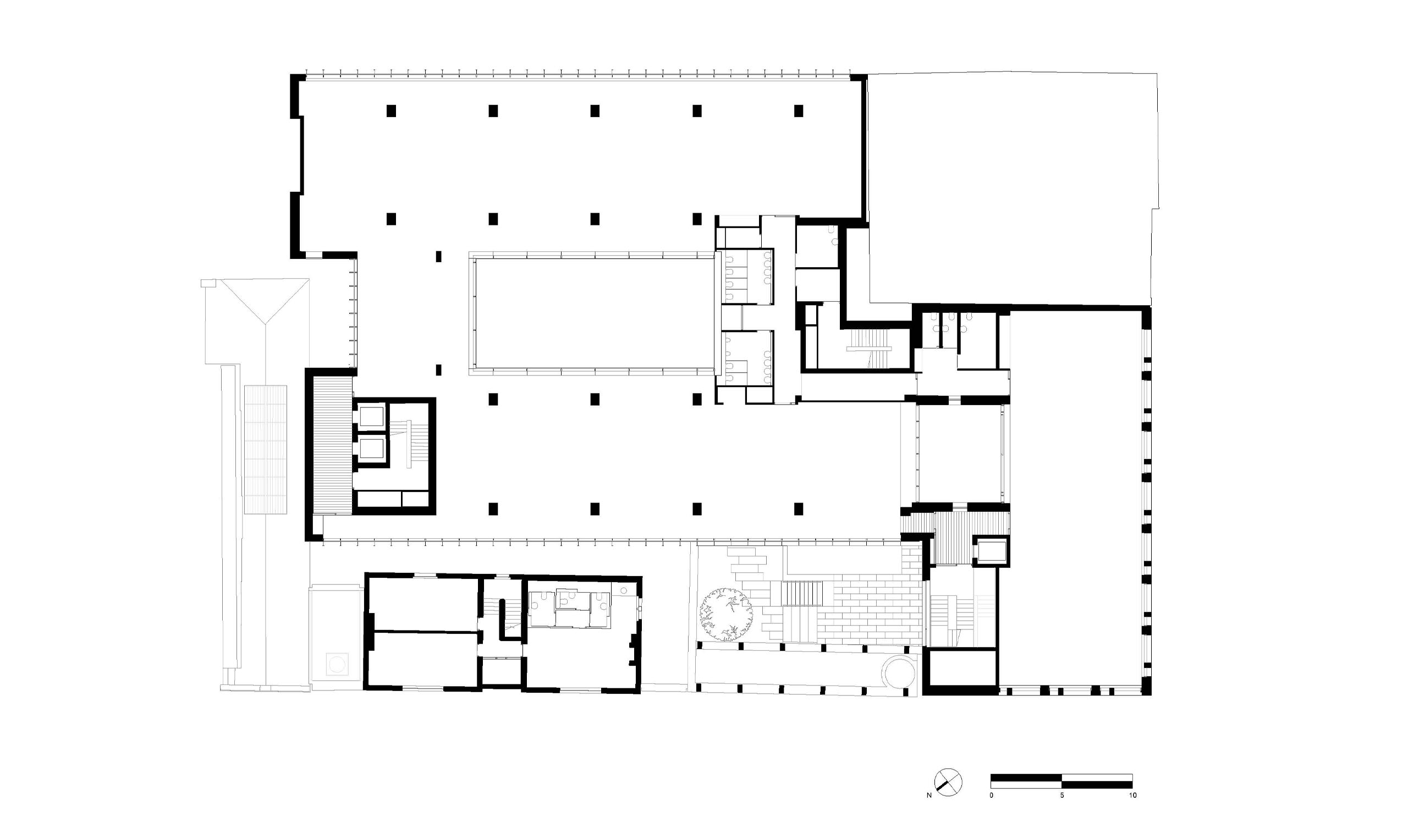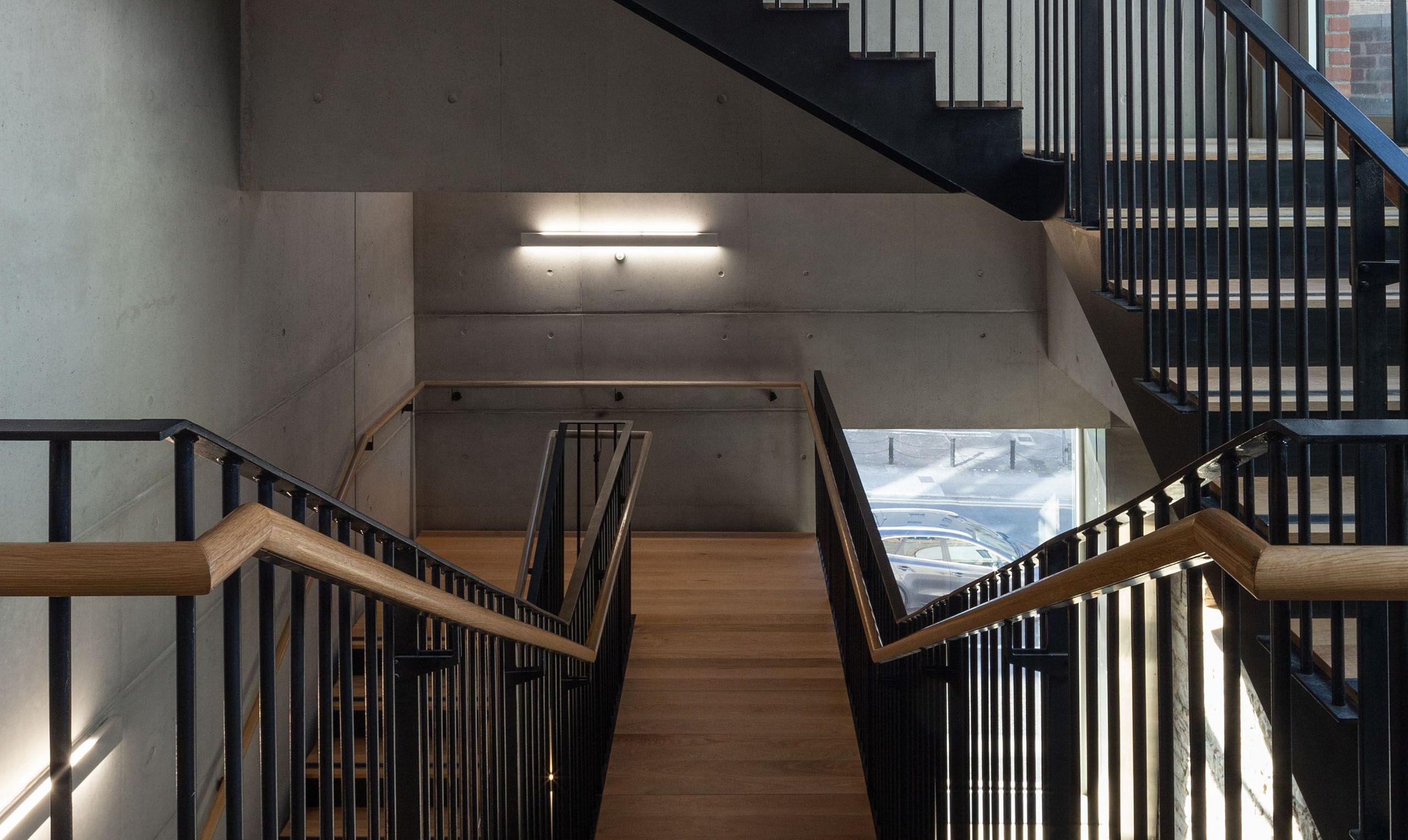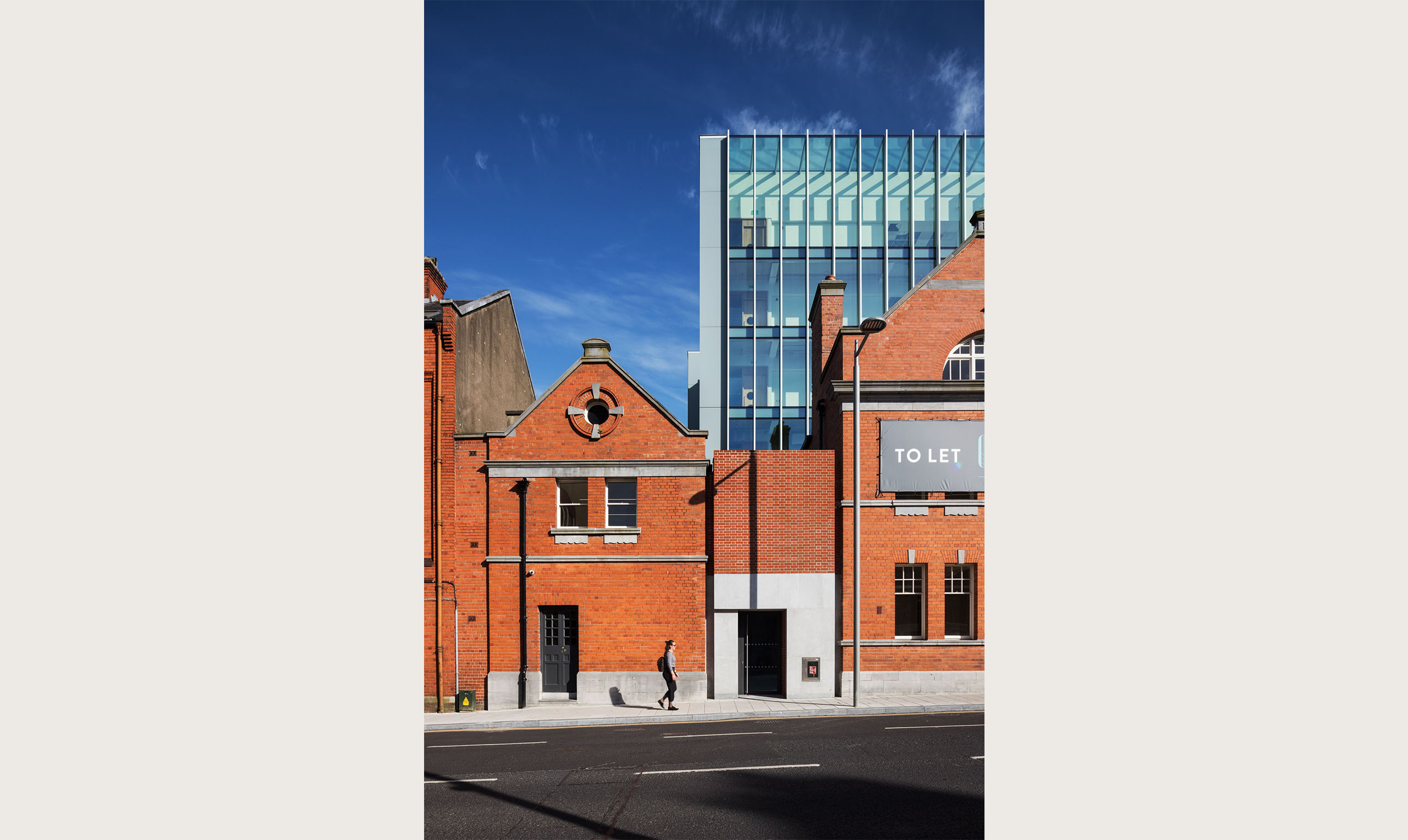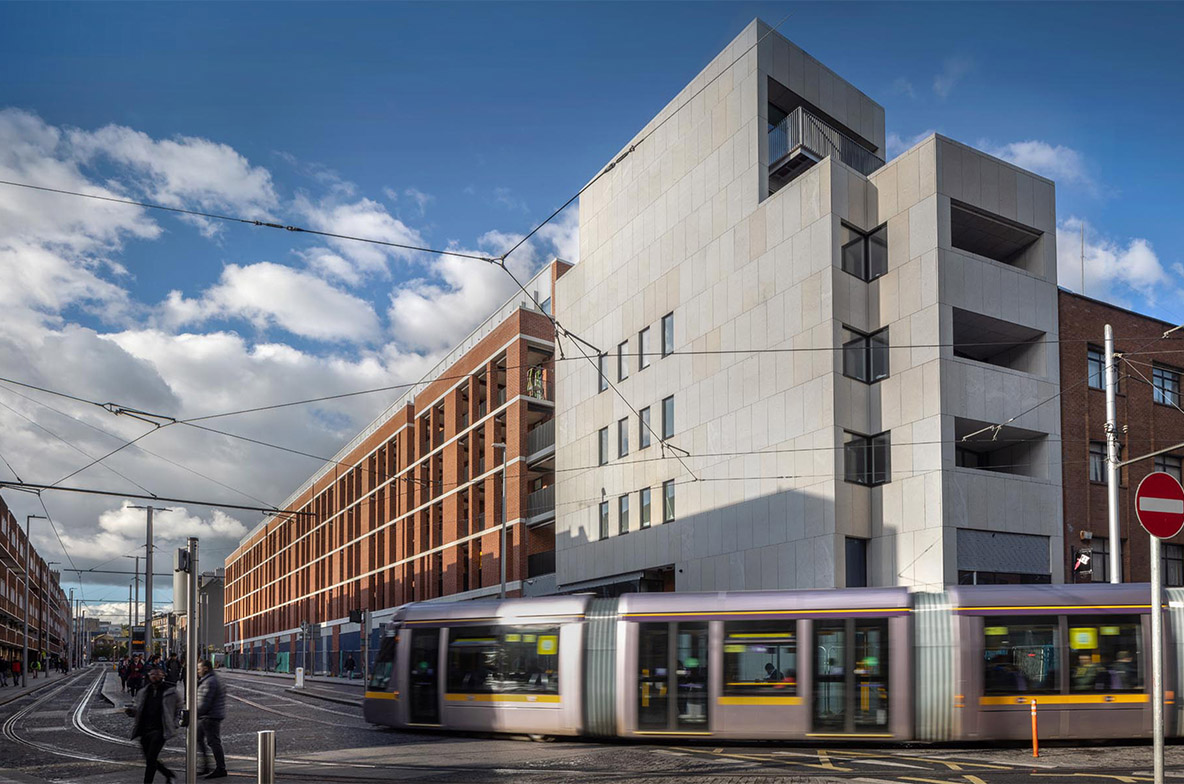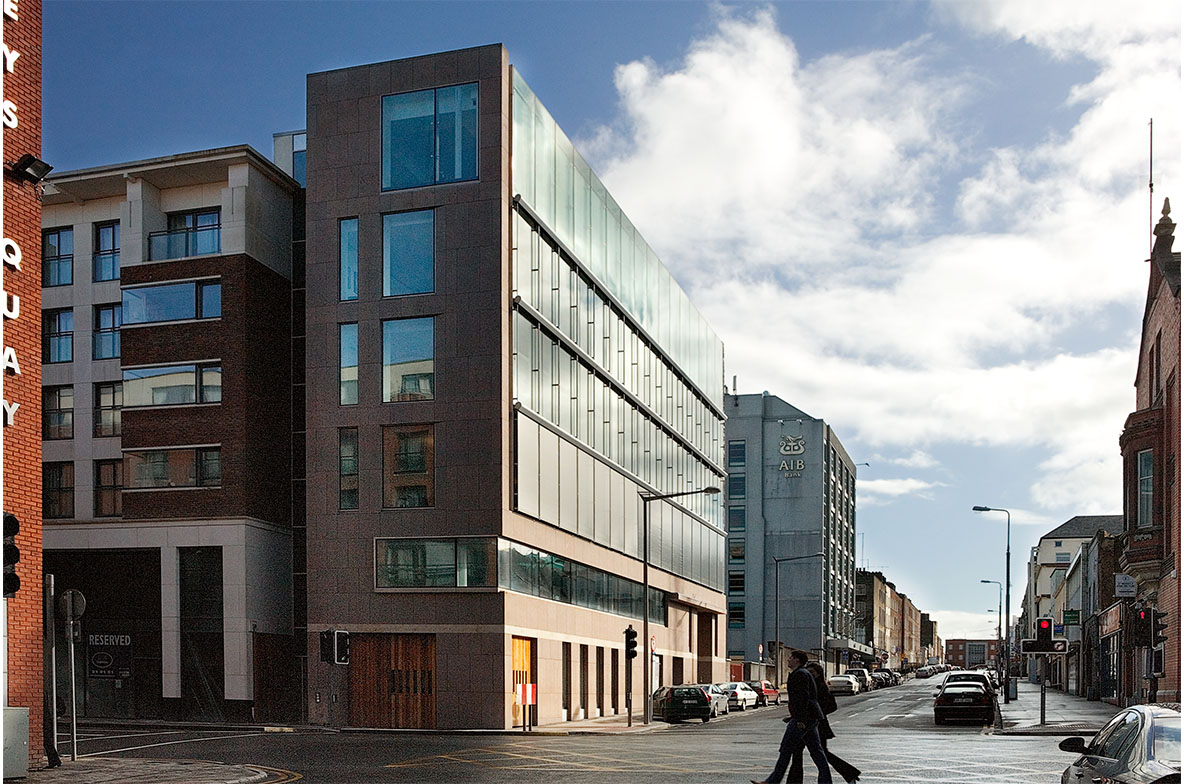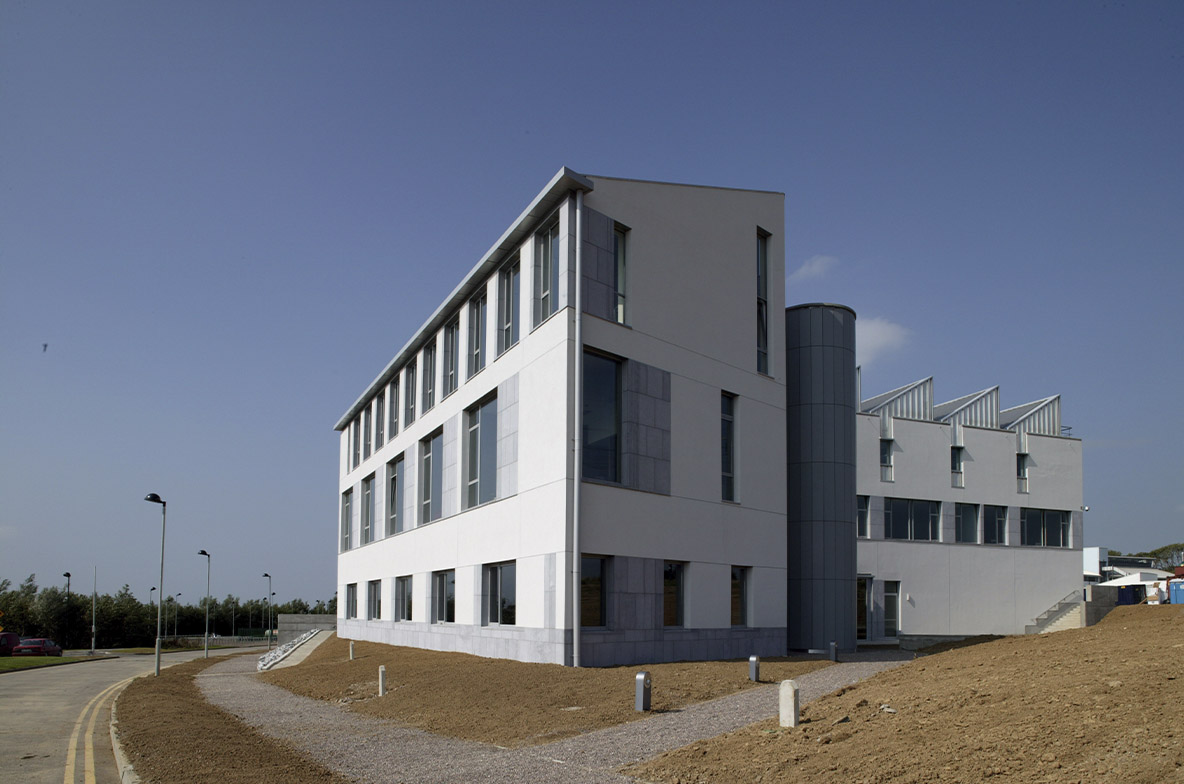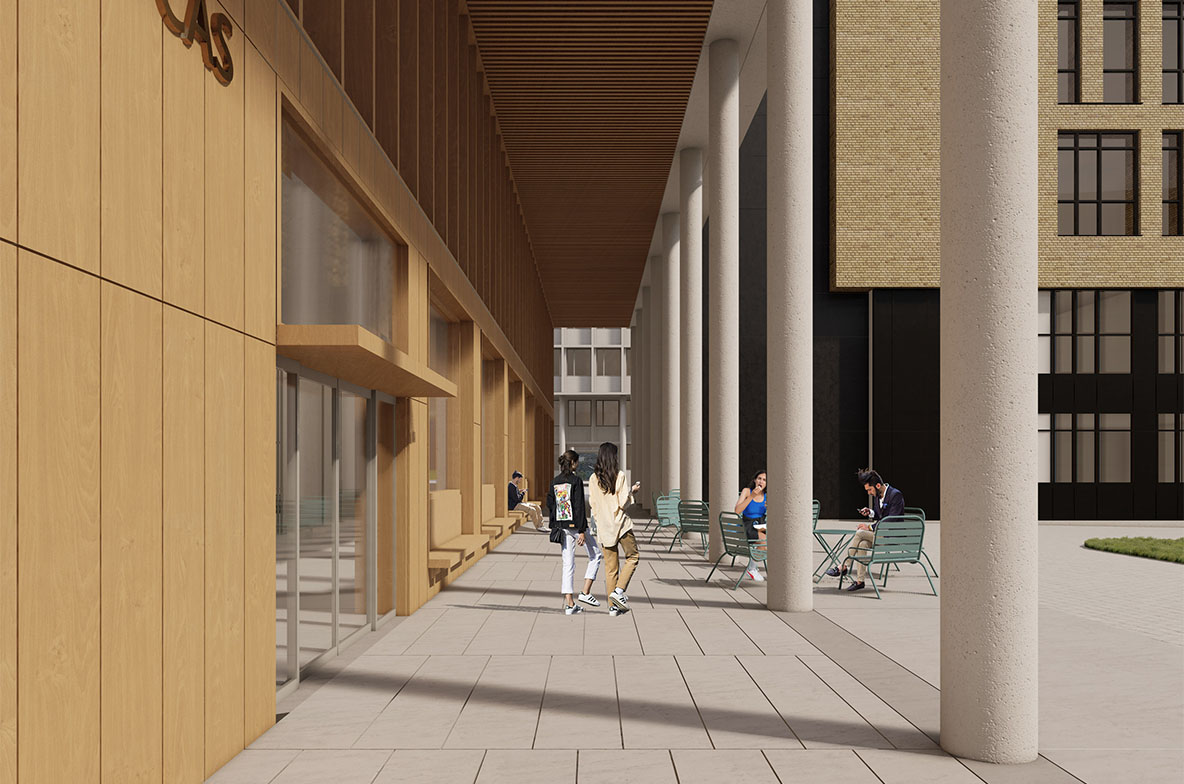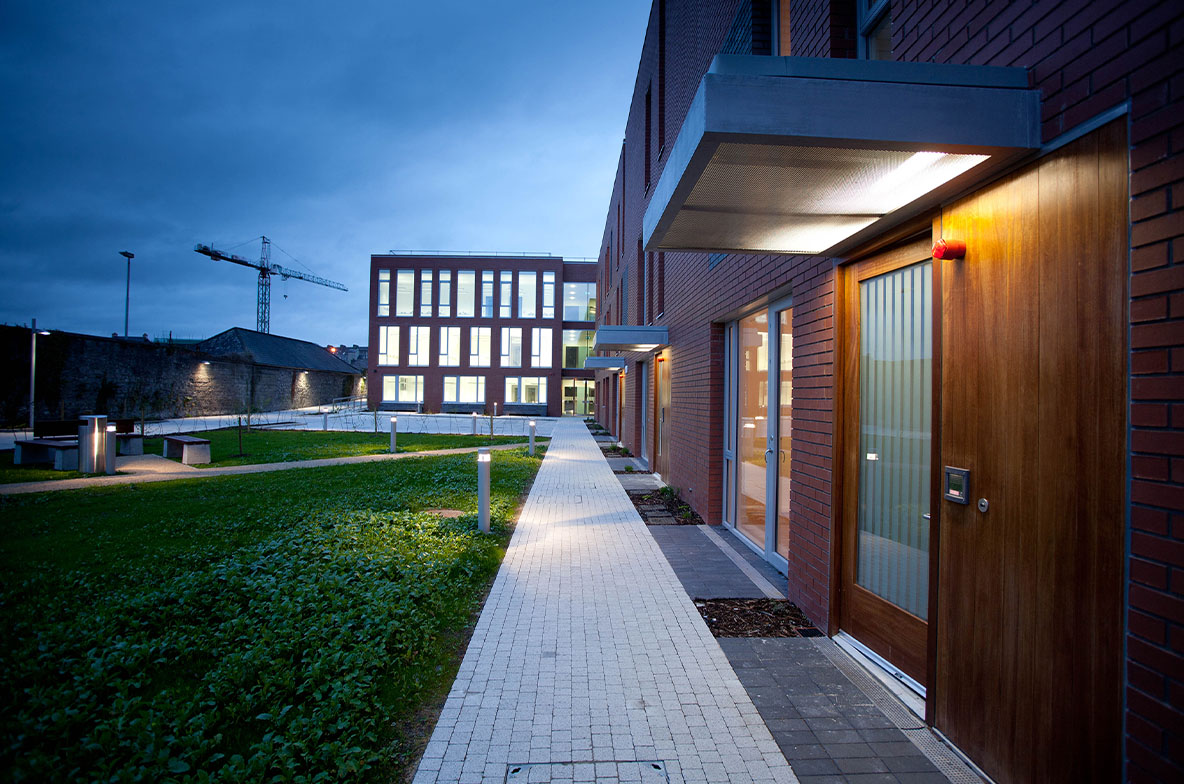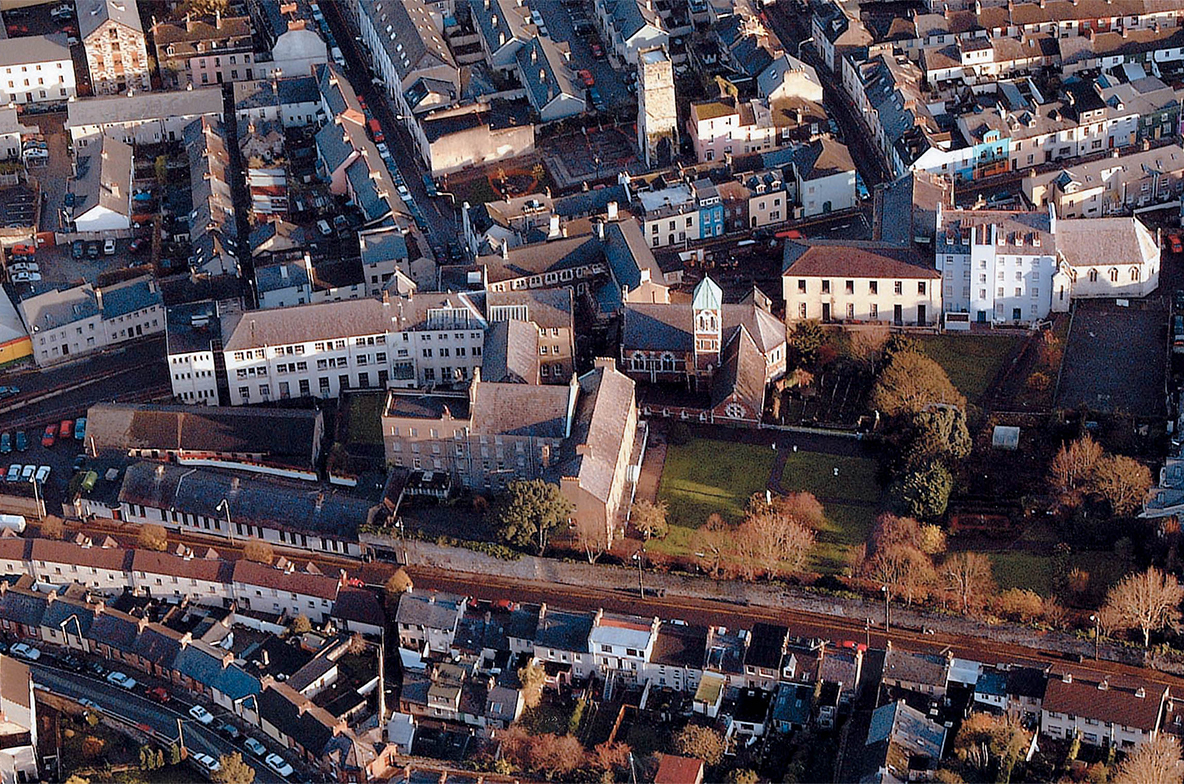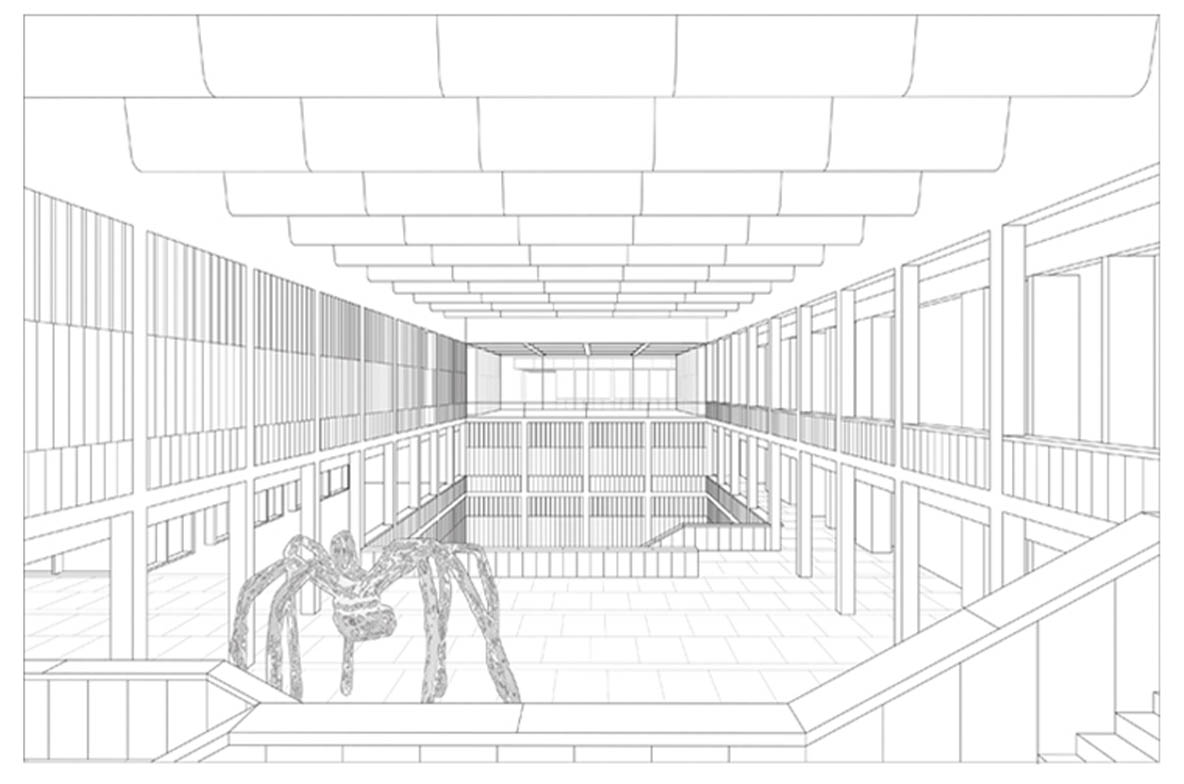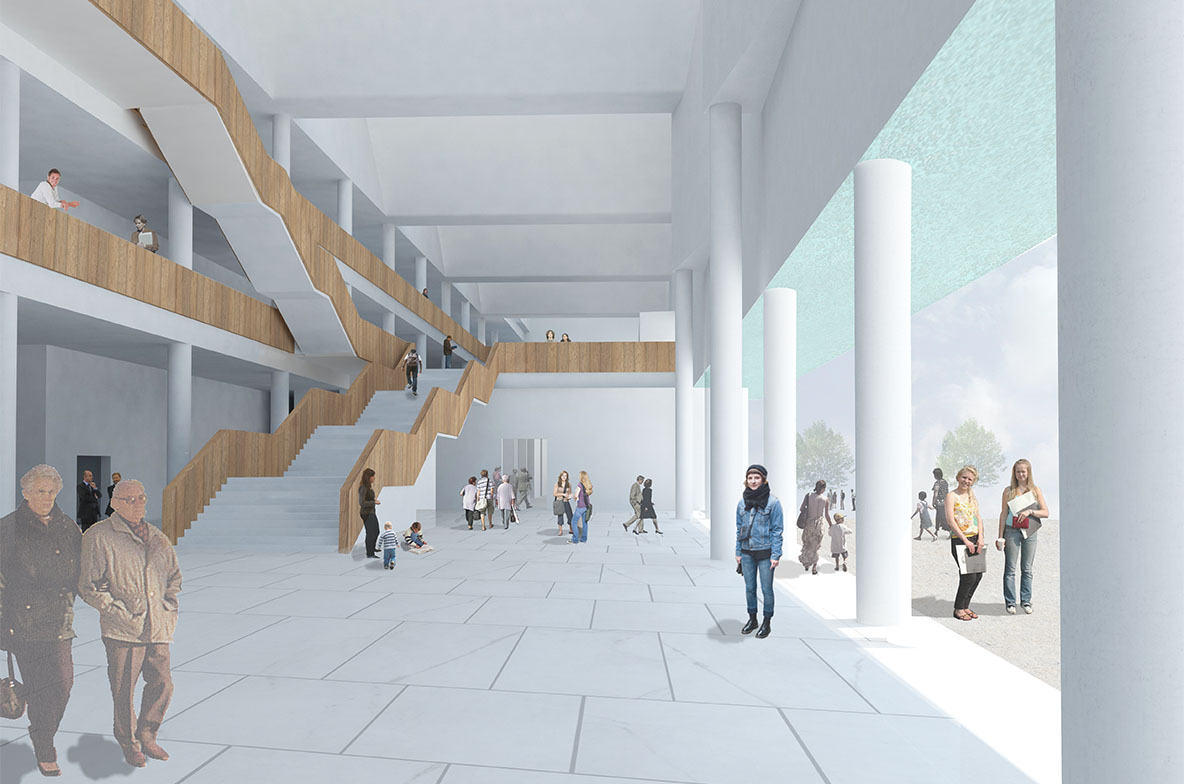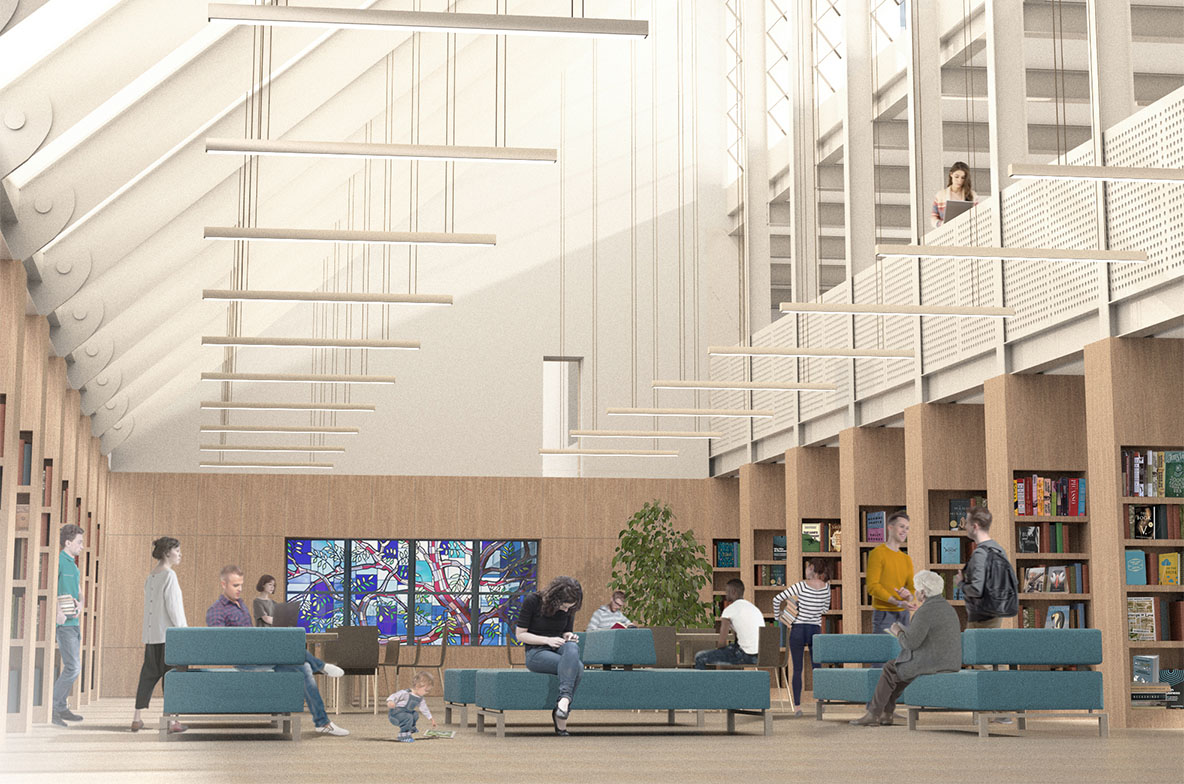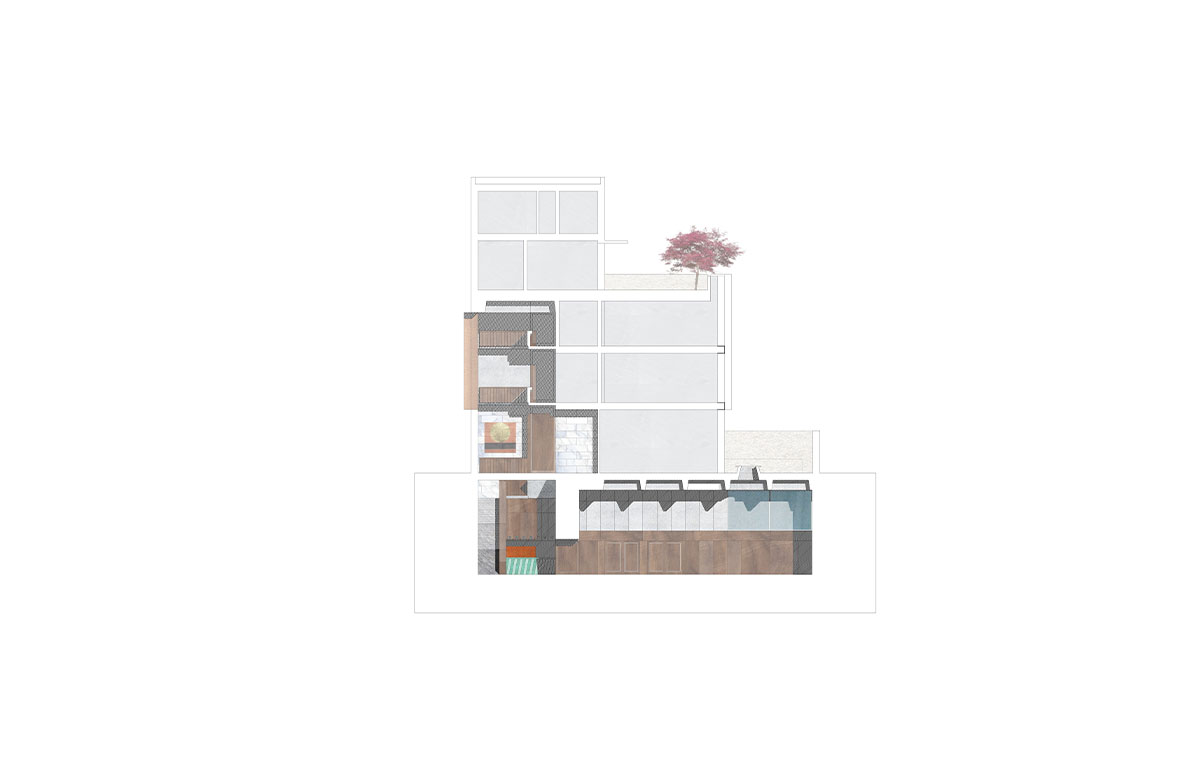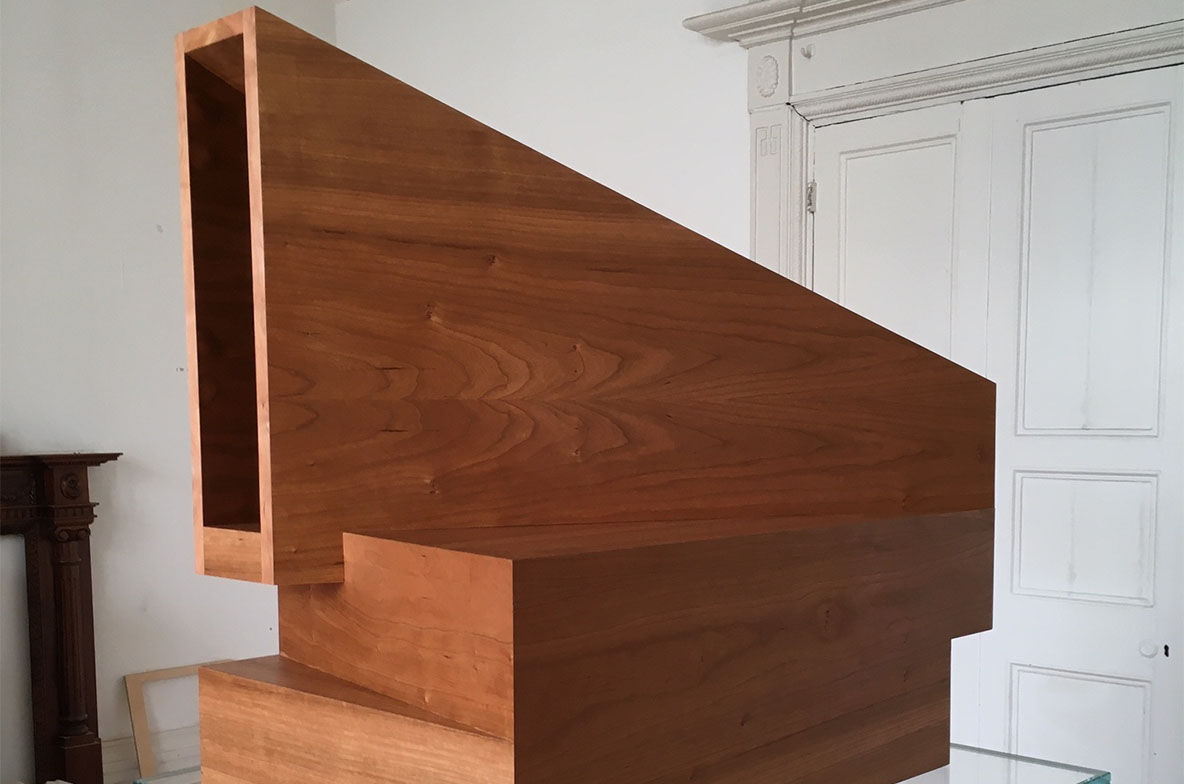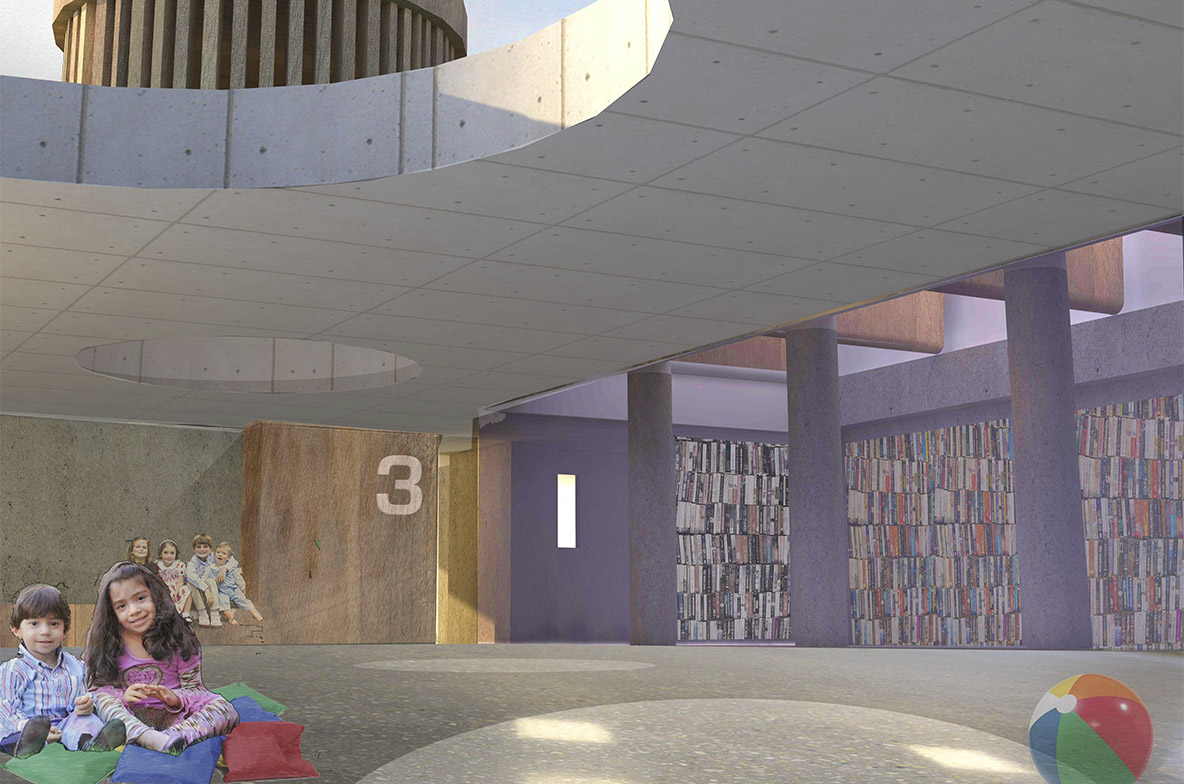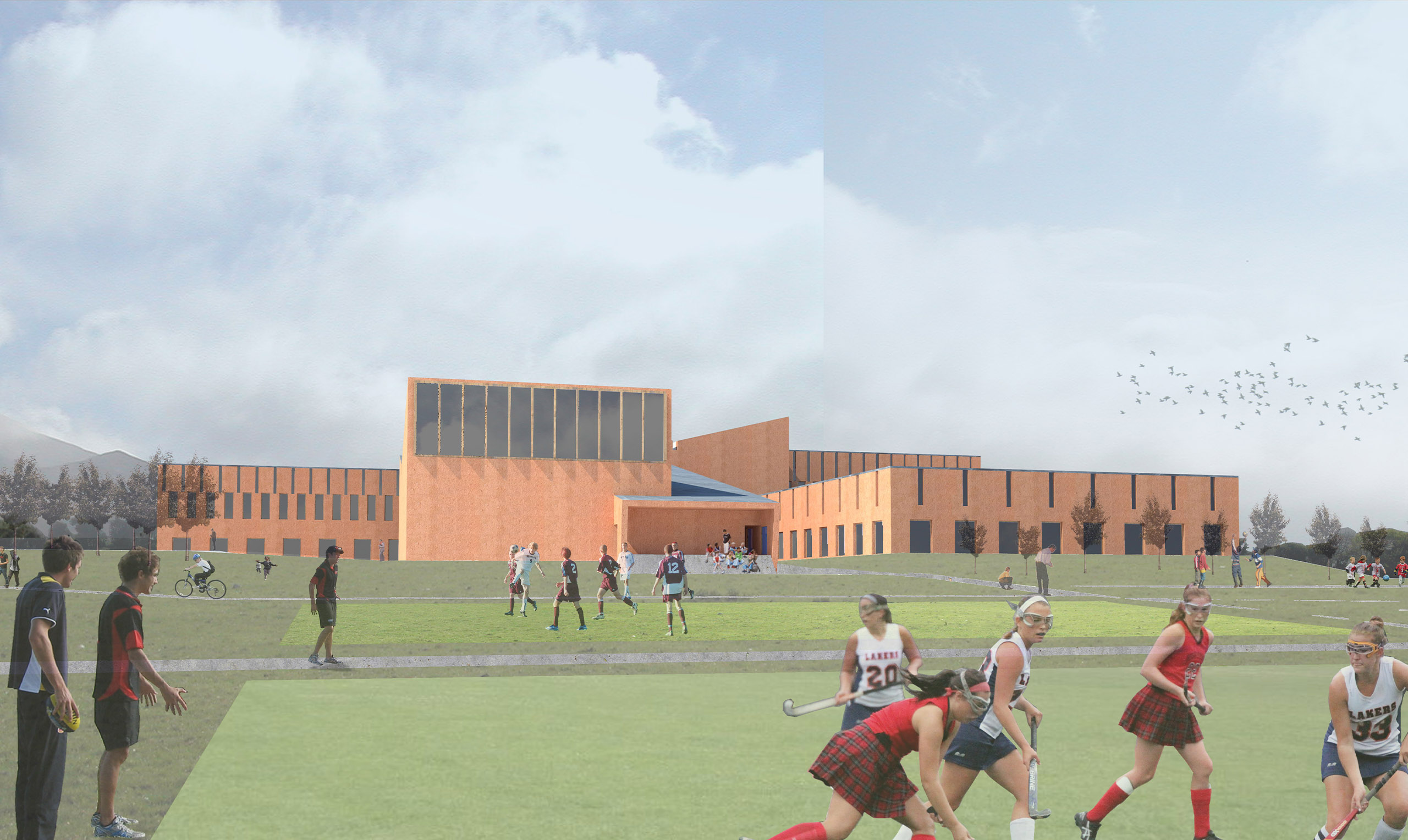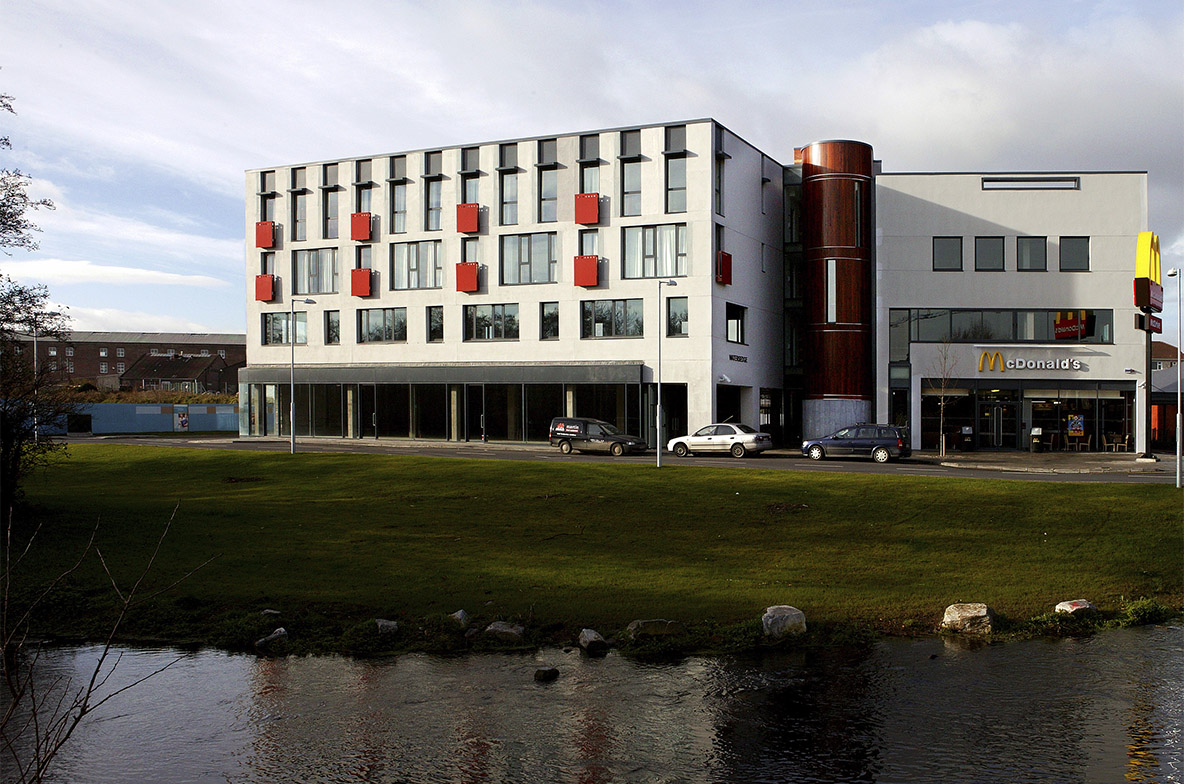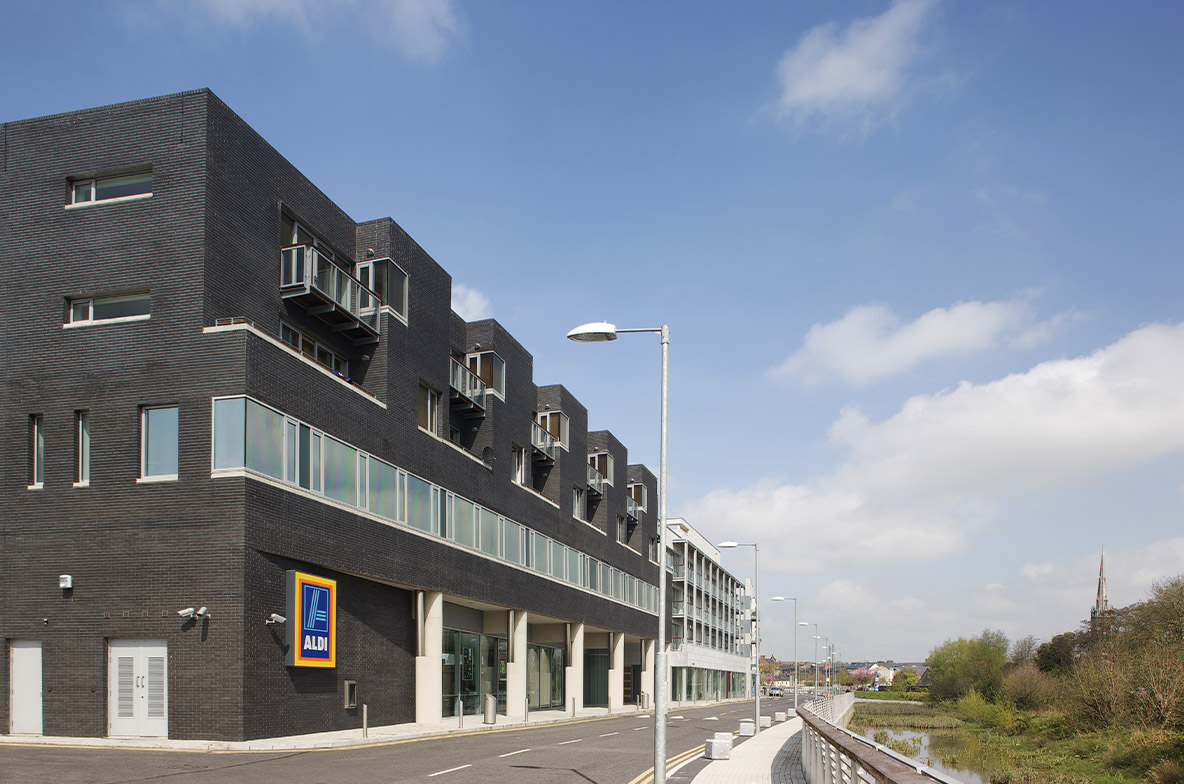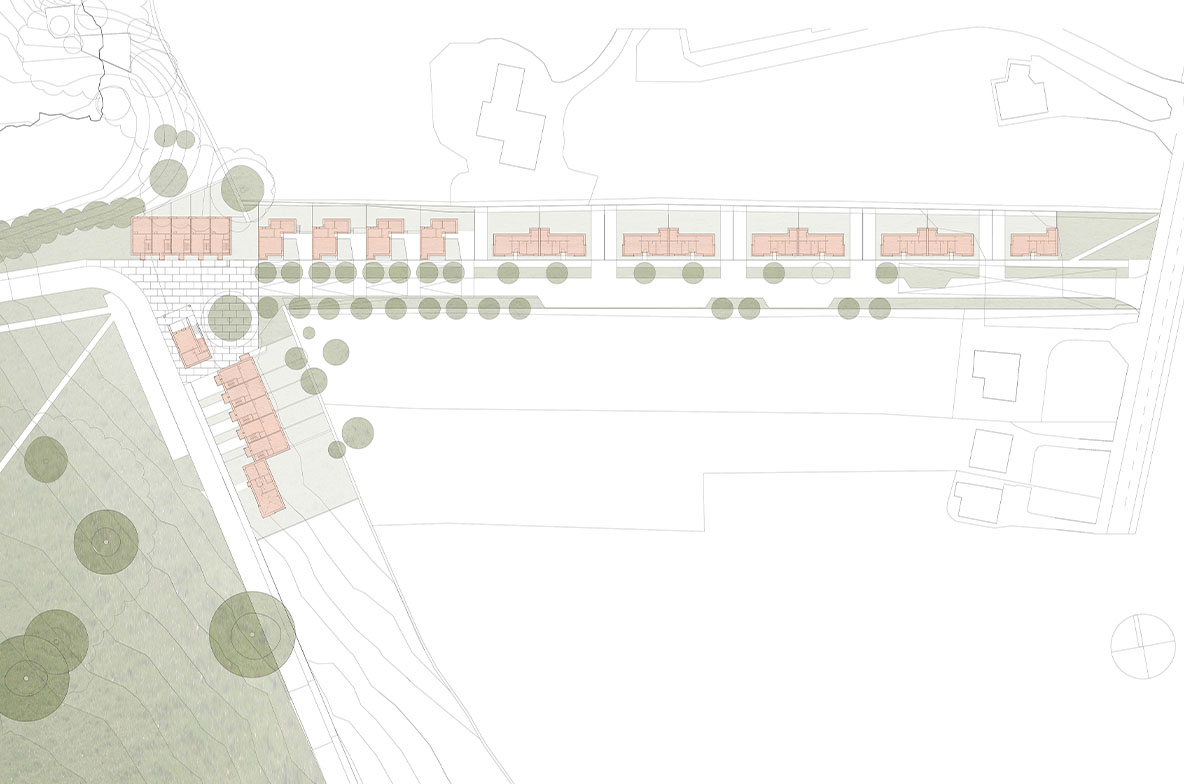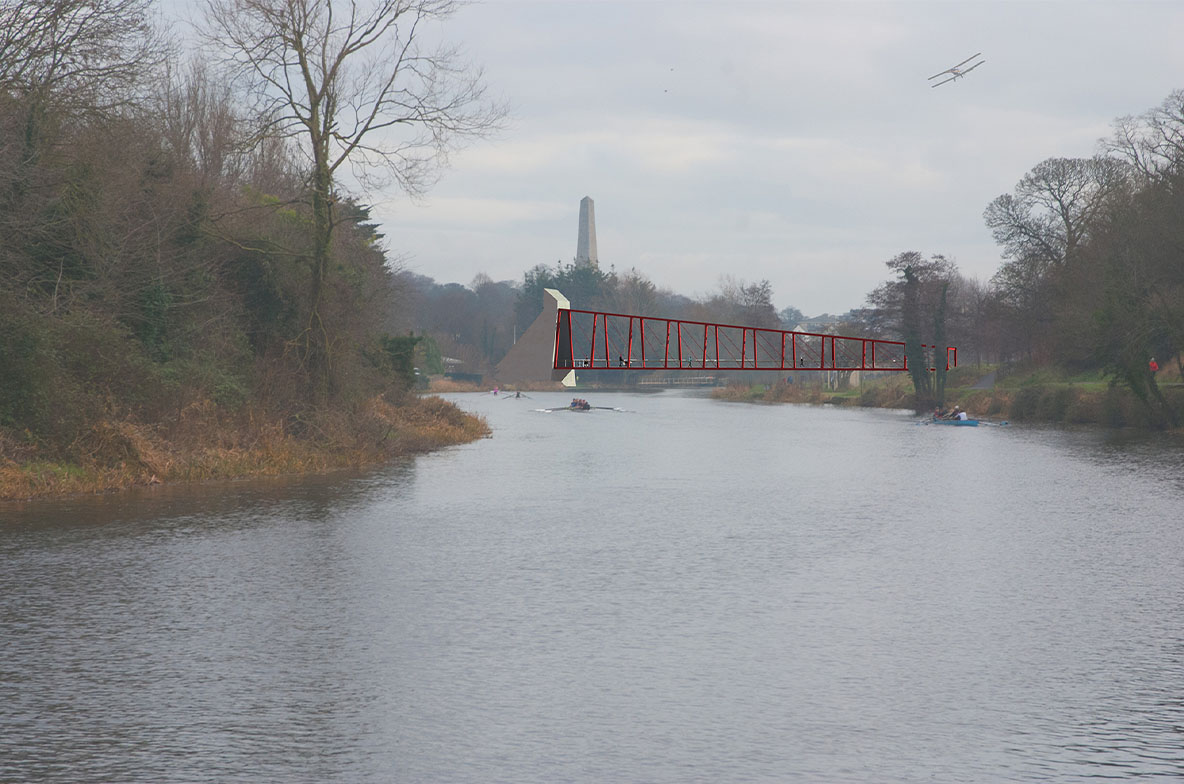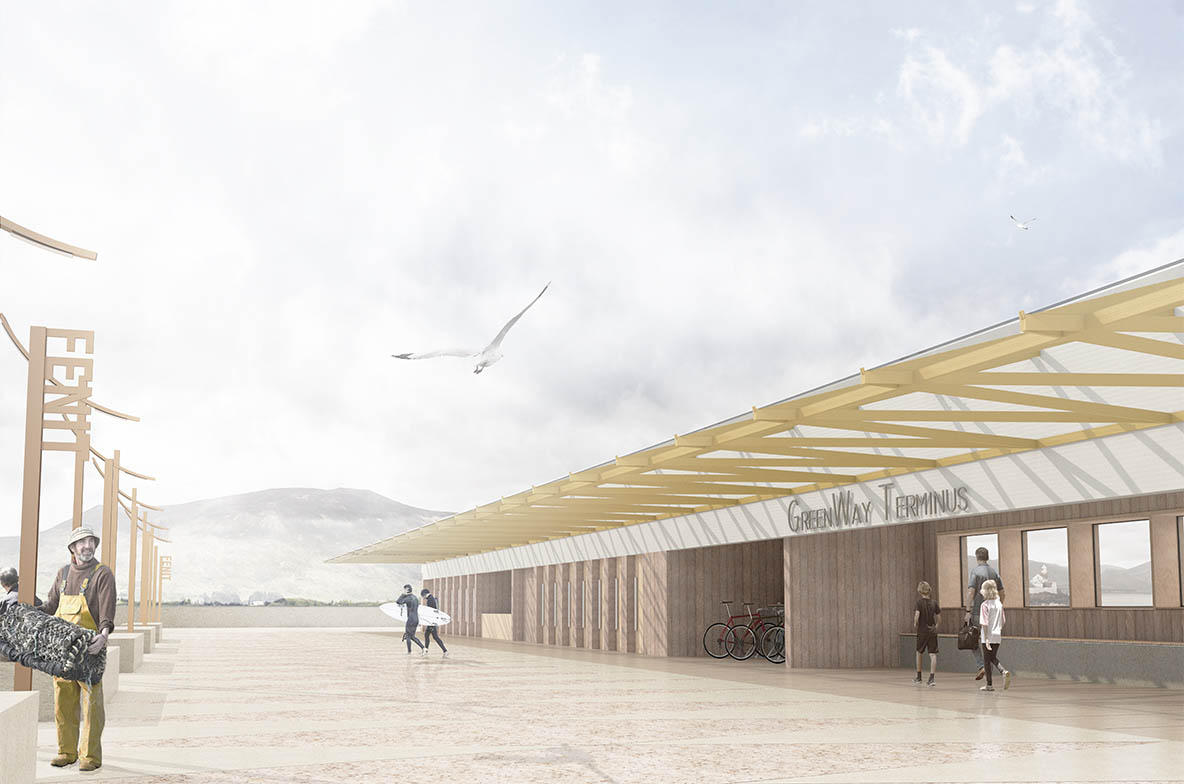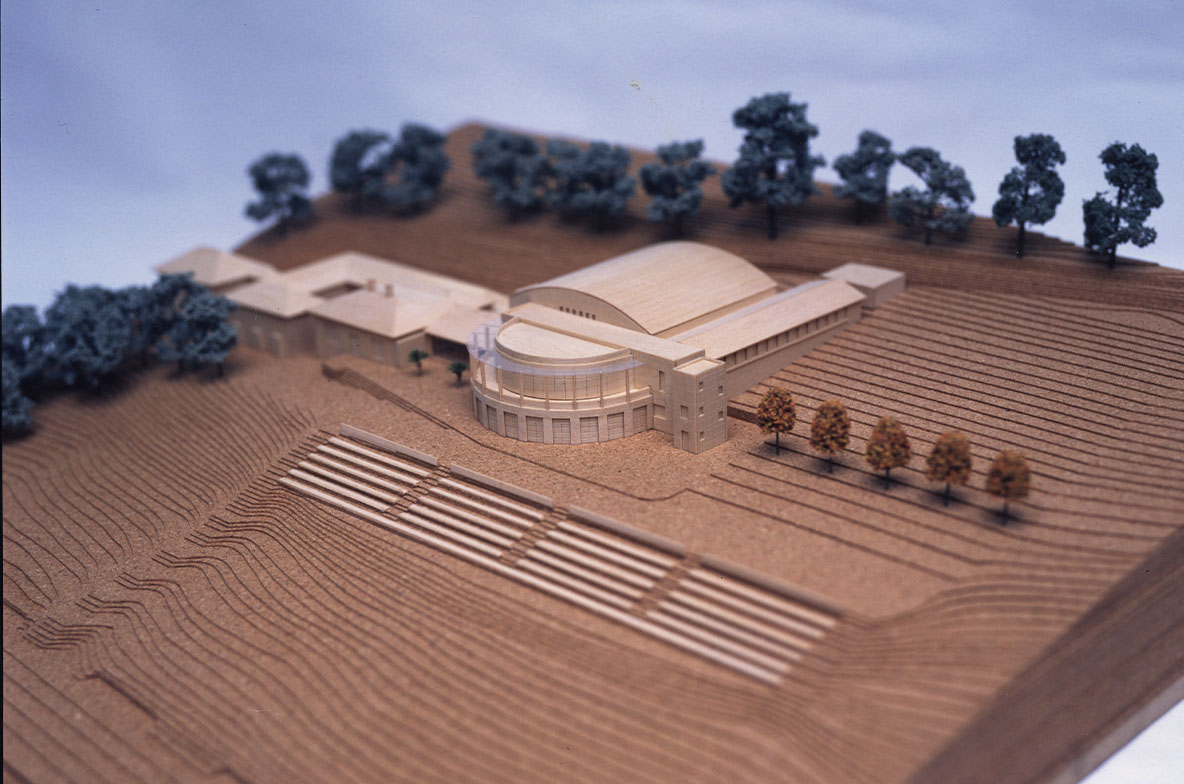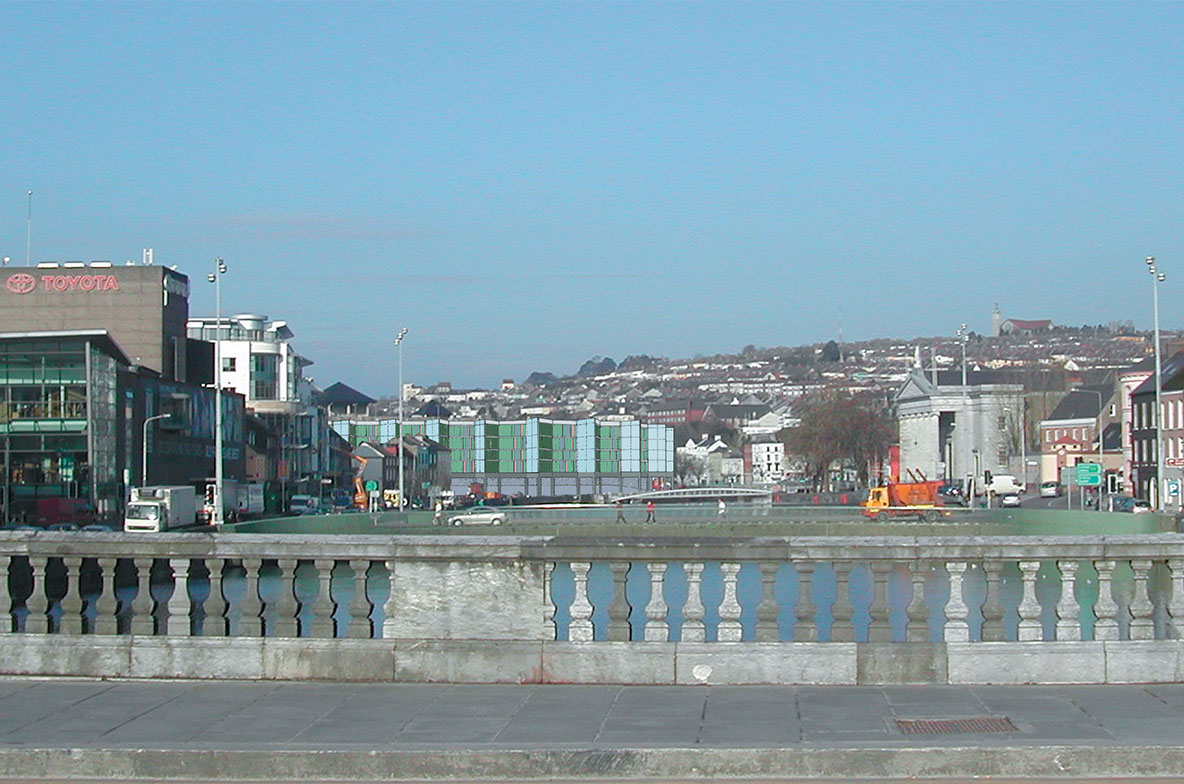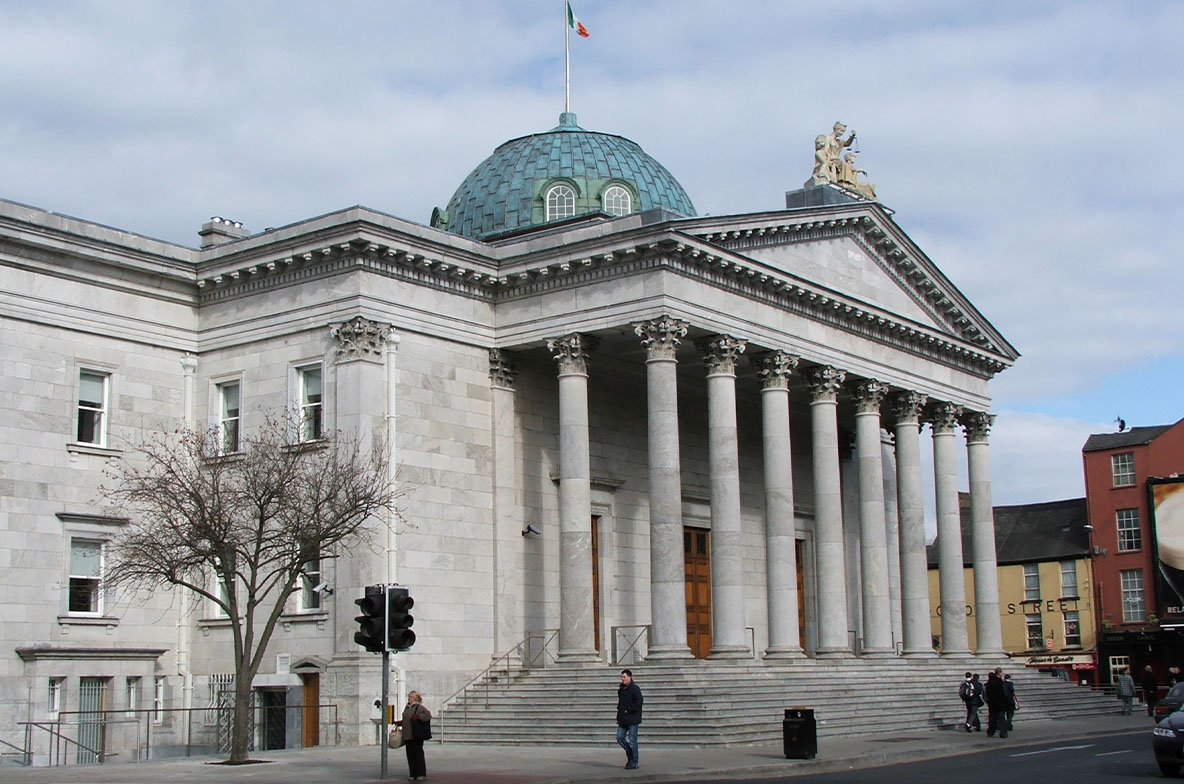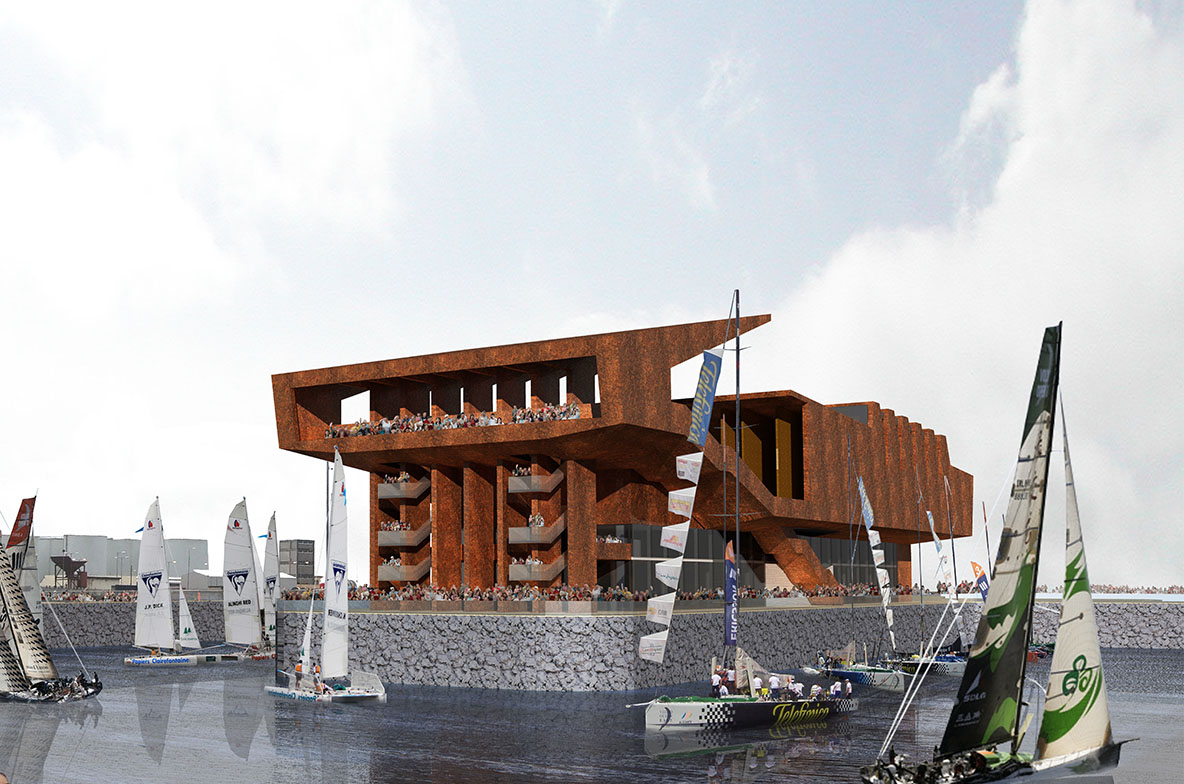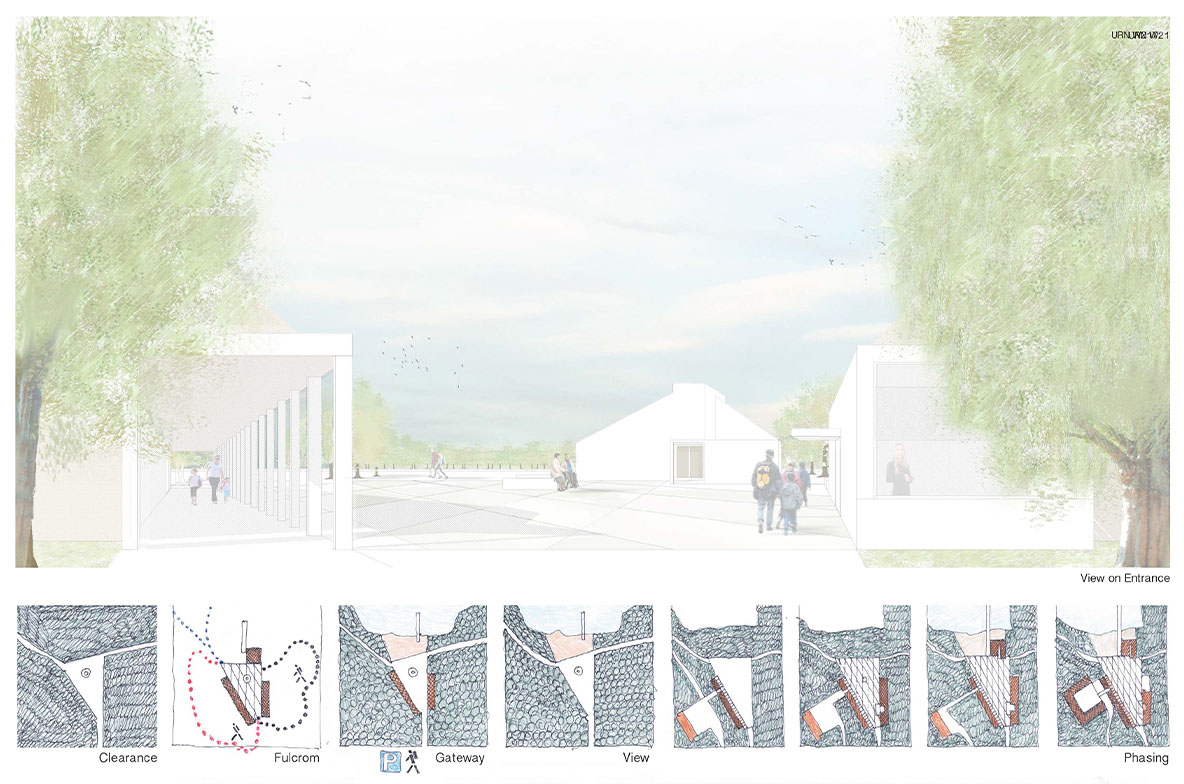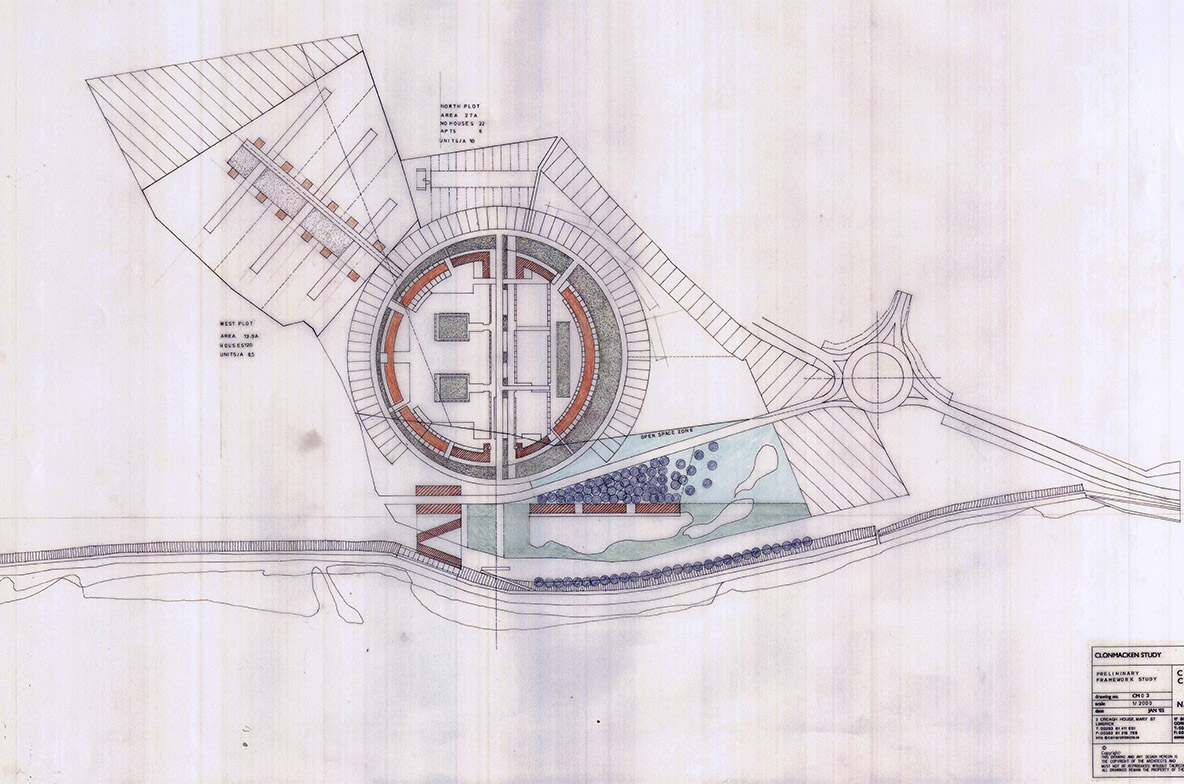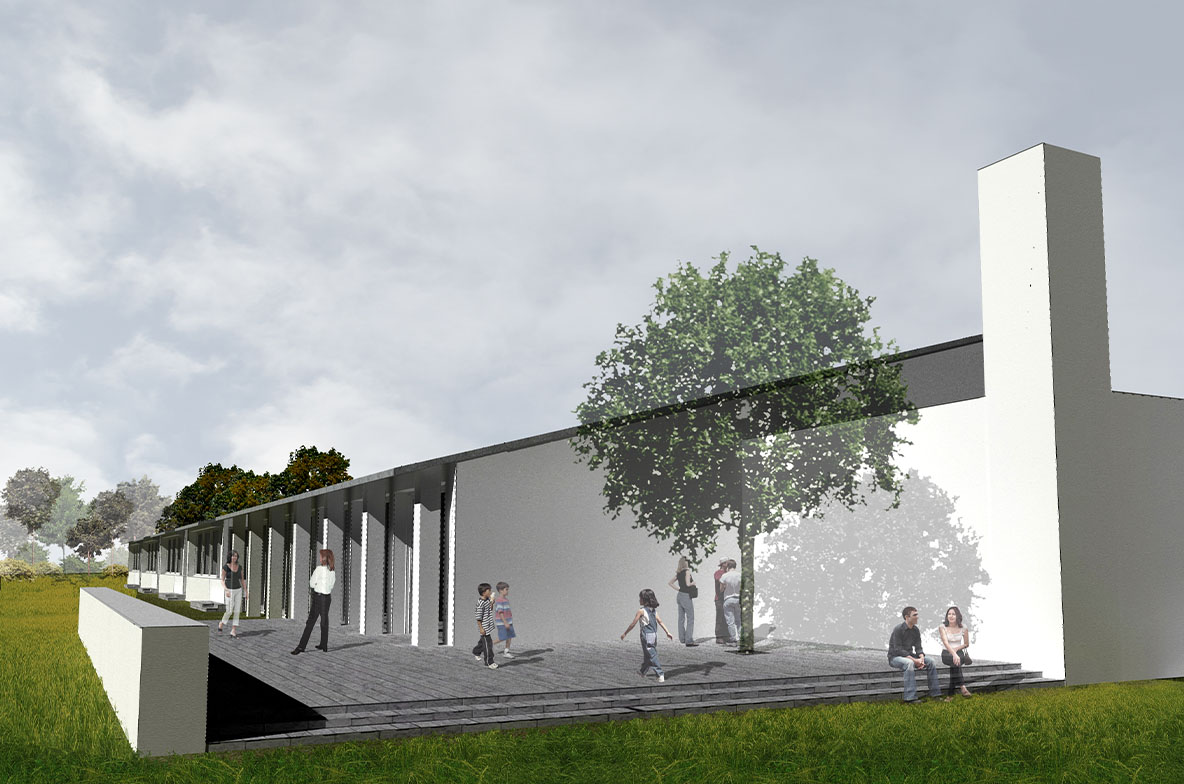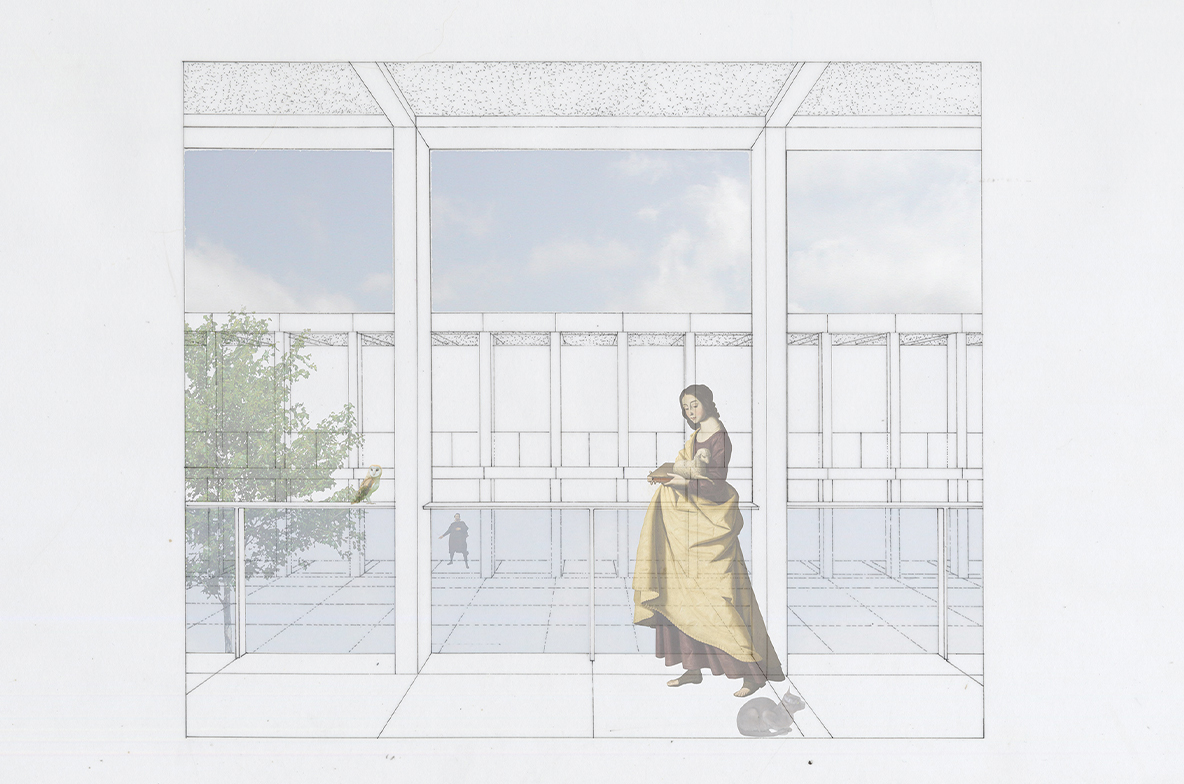Gardens International
2019, Limerick, Ireland
Joint Venture with Denis Byrne Architects
The characteristically rational and elegant grid form of Georgian streets and squares in Newtown Pery was established in the 18th century. This is the location of the Hanging Gardens, or more correctly, Roche’s Hanging Gardens, and the history of this unique fragment is redolent of a city at its peak, “the finest town in Ireland” according to Lewis’ Topographical Dictionary 1837. The original developers, Thomas and William Roche, were successful businessmen and founded a bank in 1801, moving its headquarters in 1806 to no.99 Georges Street (now O’ Connell Street) in the heart of Newtown Pery.
No.99 was also William’s residence and he built an extensive complex of stone vaults to the rear on land extending to Henry Street. The massive stone vaults were topped with terraced gardens, incorporating a sophisticated system of irrigation and greenhouses for the cultivation of exotic fruits such as pineapples, oranges and peaches and affording panoramic views of the river Shannon and its lush hinterland.
Continue Reading
+
Two of the vaults now remain, having been replaced in the early 20th century by a courtyard complex of red brick buildings accommodating the General Post Office. This too was partially replaced in 2007, and the courtyard space replaced by a 5 storey concrete frame to be developed as a commercial office development. With the recession came stagnation, as the concrete frame and historic fragments were abandoned and turned to ruins. Acquired by Limerick City and County Council in 2015, the city block was consolidated with the acquisition of the corner site on no.19 Henry Street. The reprisal of this project offers an opportunity to create a unique workplace development in the heart of the city, the first regenerating project for Limerick 2030. The development is not merely a building, but an assembly of buildings, a piece of the city, a mosaic of old and new. An understanding of the diverse characteristics of each part is key to the realisation of a coherent and integrated design proposal.
The development may be described as comprising 3 key elements:
A rational and logically planned office building, arranged about 2 green courtyards, and clad in a glass skin for panoramic riverside views. An array of deep aluminium fins modulate solar gain and provide a neutral background to the more articulated street buildings.
The historic structures of the general post office buildings and the stone vaults of the hanging gardens: the original fabric and room volumes are restored and contemporary interventions inserted to repair the street
The corner building, a new structure of exposed concrete with a masonry frame to the street that anchors the development and provides a prominent street presence. High thermal mass, tall spaces with no ceilings and opening louvres for natural ventilation contribute to the projects sustainable design with an A3 rating.
Uniting all of these elements, at street level, is a voluminous hall, lined in marble, a public room. The main entrance to the complex is through one of the brick vaulted spaces of the Hanging Gardens structure. The floor slabs, which were recent interventions, were removed to reveal the original volumes of the vaults. The roof terrace has been reinstated with trees and shrubs, and a pergola. In keeping with the original Hanging Gardens, the green ethos is reinforced with access to open space and views contributing to the LEED Gold certification.
